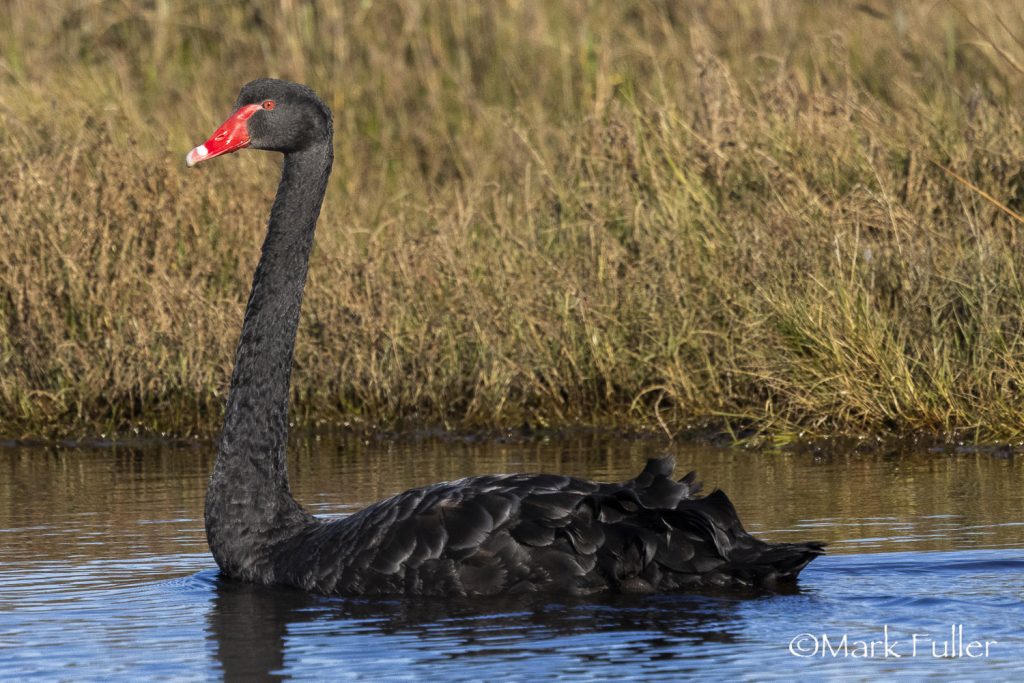My mission for 2025 was to record 300 bird species in NSW & the ACT, a friend suggested 400 so I’ve settled on 365, one for every day of the year. You can follow my progress here as I upload photos of my latest ‘new’ bird.
#300 Ground Cuckooshrike – Wilcannia
No. 300 was a hard one to get, but even better to find a family group by the roadside as we headed home from two weeks of exhaustive but enjoyable surveying in the Paroo-Darling NP

#298 White-browed Woodswallow – Paroo-Darling
With so many Masked Woodswallows, I knew a closer look at the flocks would give me my 4th Woodswallow species of the Paroo-Darling Bird surveys, usually I’ve seen flocks of WBWSs with an occasional Masked, but it was vice versa on this occasion.
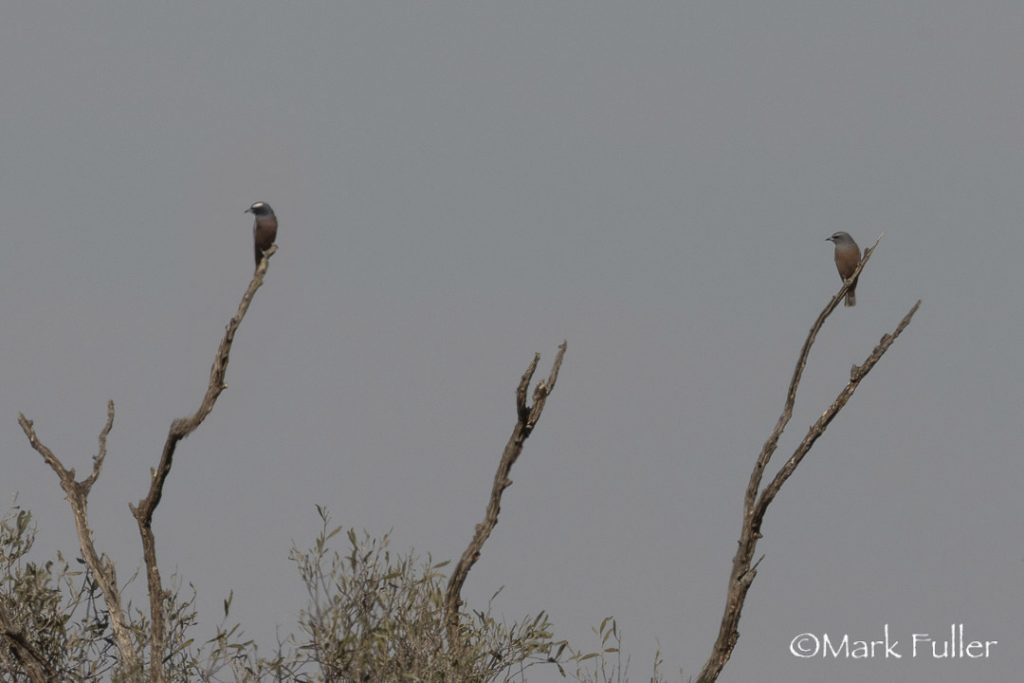
#296 Purple-backed Fairywren – Paroo-Darling
Although seen before I haven’t amended my records, based on location, since the split so they’re still down as Variegated FWs.
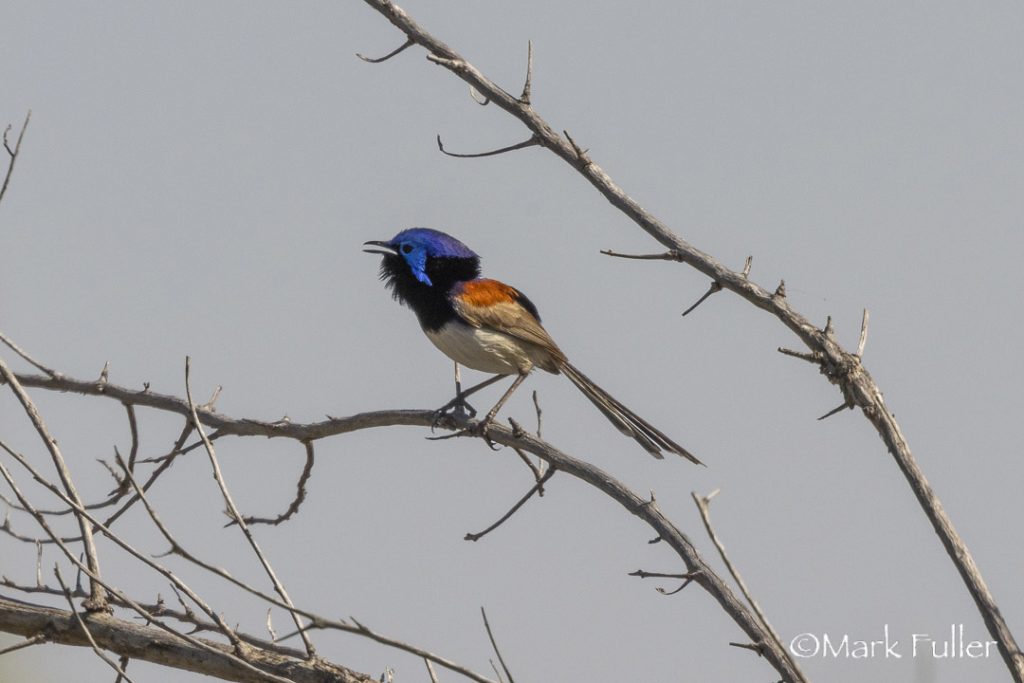
#295 White-backed Swallow – White Cliffs
We were rewarded when we took a little R’n’R from the surveys, heading along to White Cliffs for a Sunday lunch and a few beers.
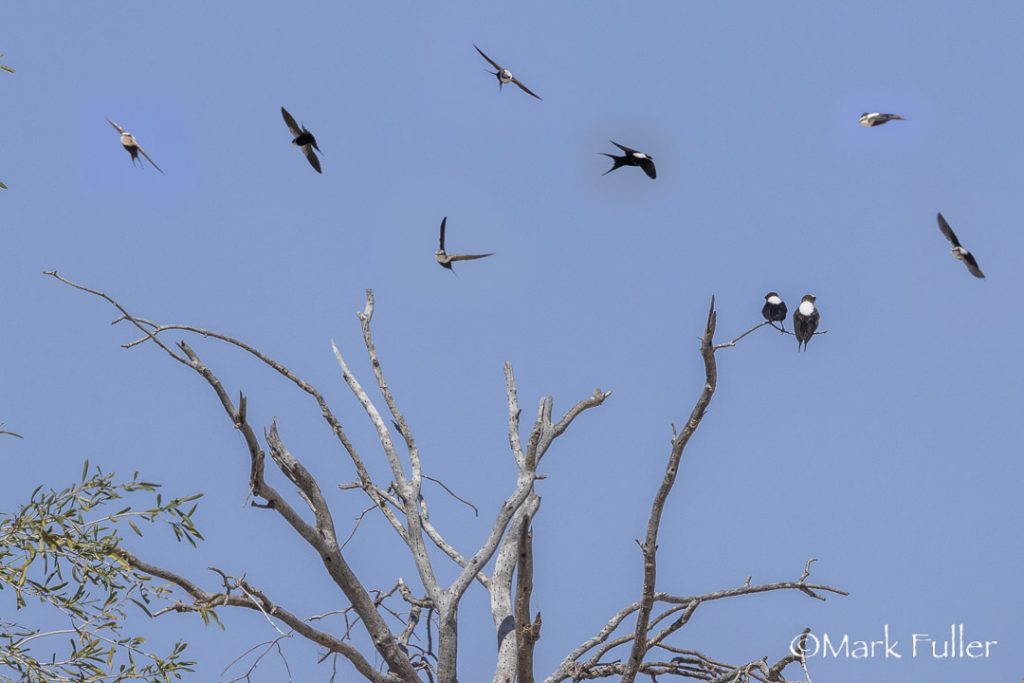
#291 Bourke’s Parrot – Paroo-Darling NP
This ‘lifer’ was quite a special inland parrot species for me, it’s small size and understated pastel tones giving it a very unique look.
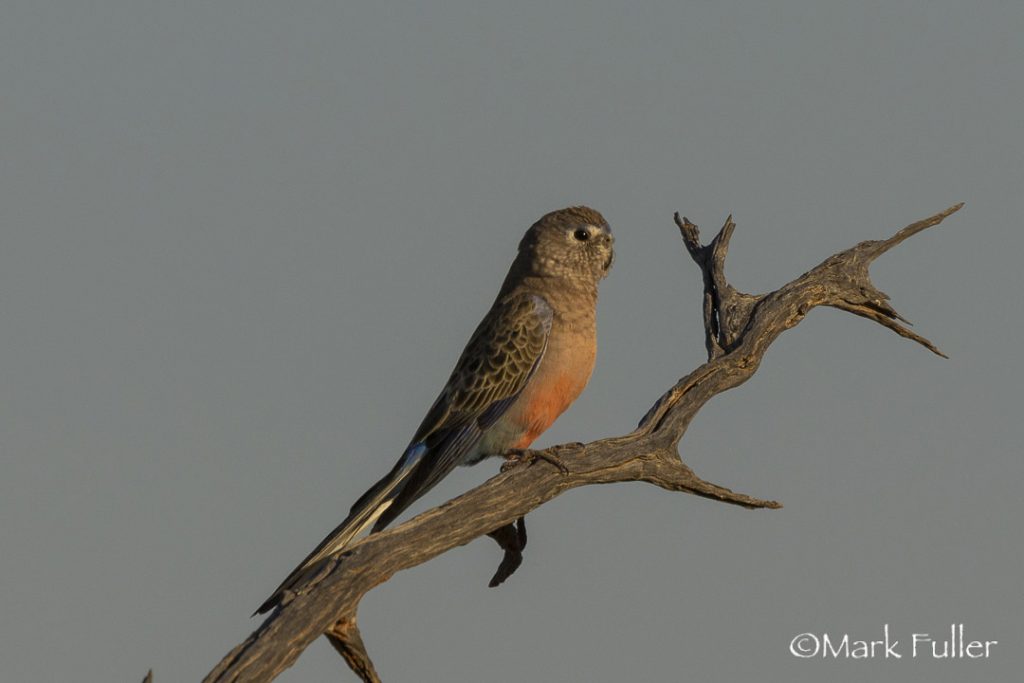
#290 Masked Woodswallow – Paroo-Darling NP
Large flocks of Masked Woodswallows were seen at several locations during the Paroo-Darling Bird surveys. I sometimes call these Black-faced by mistake, well it has got a black face!
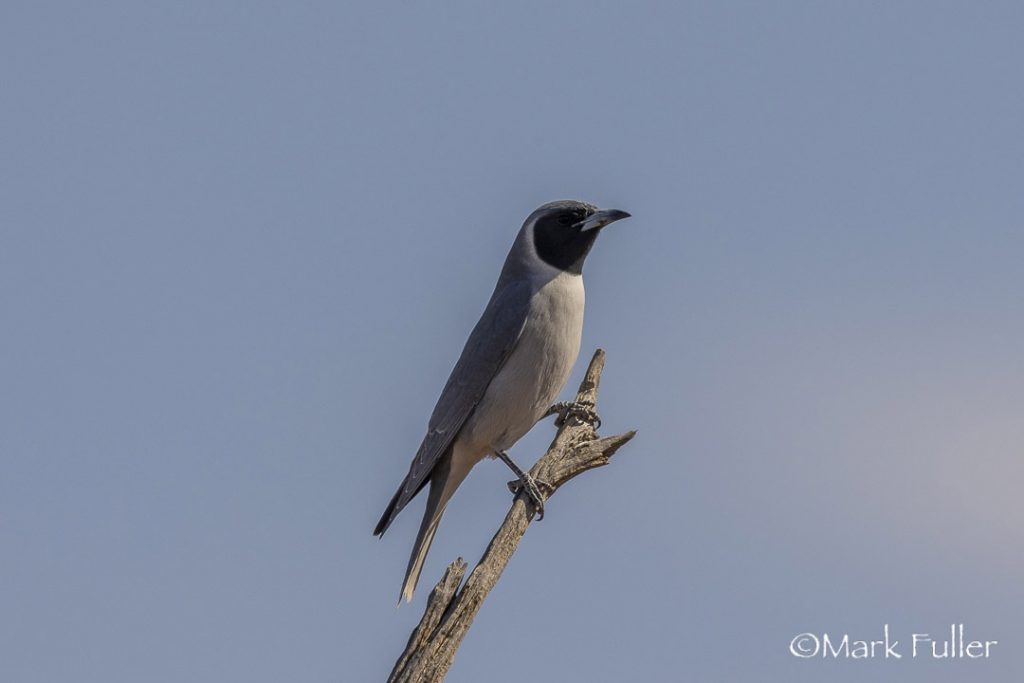
#289 White-browed Treecreeper – Paroo-Darling NP
This ‘lifer’ was a great addition to my list and my fourth Treecreeper species (White-throated, Red-browed & Brown already been recorded this year)
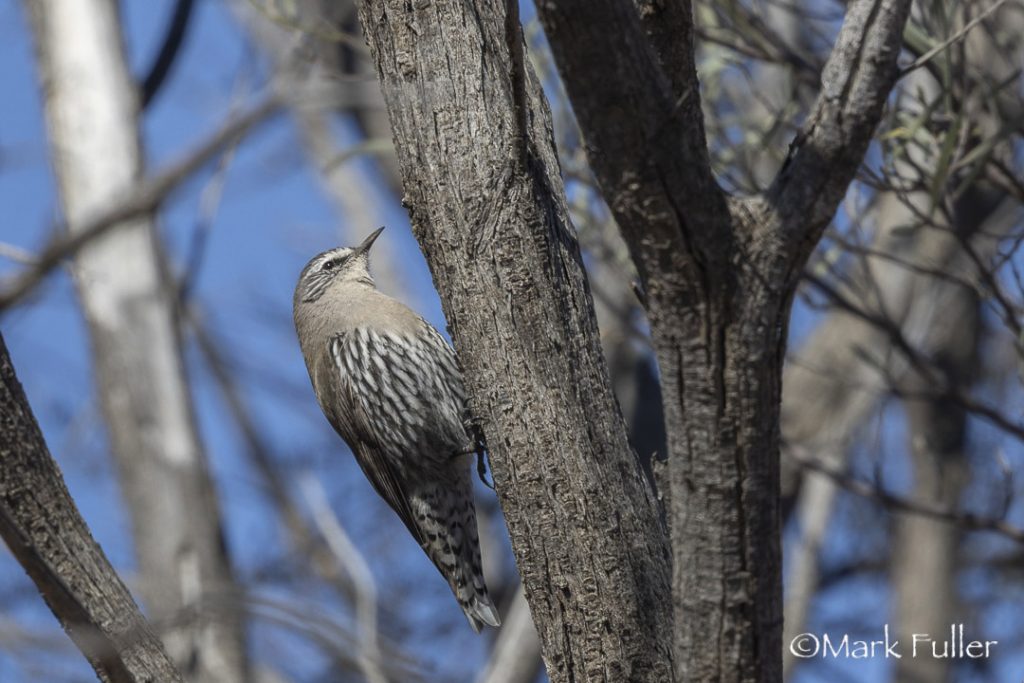
#288 Chestnut-crowned Babbler – Paroo-Darling NP
Another ‘lifer’ and my fourth Babbler spp. to complete the list. CCBs were the ‘default’ Babbler and an interesting addition for my Babbler ID, the Grey-crowned & White browed more familiar.
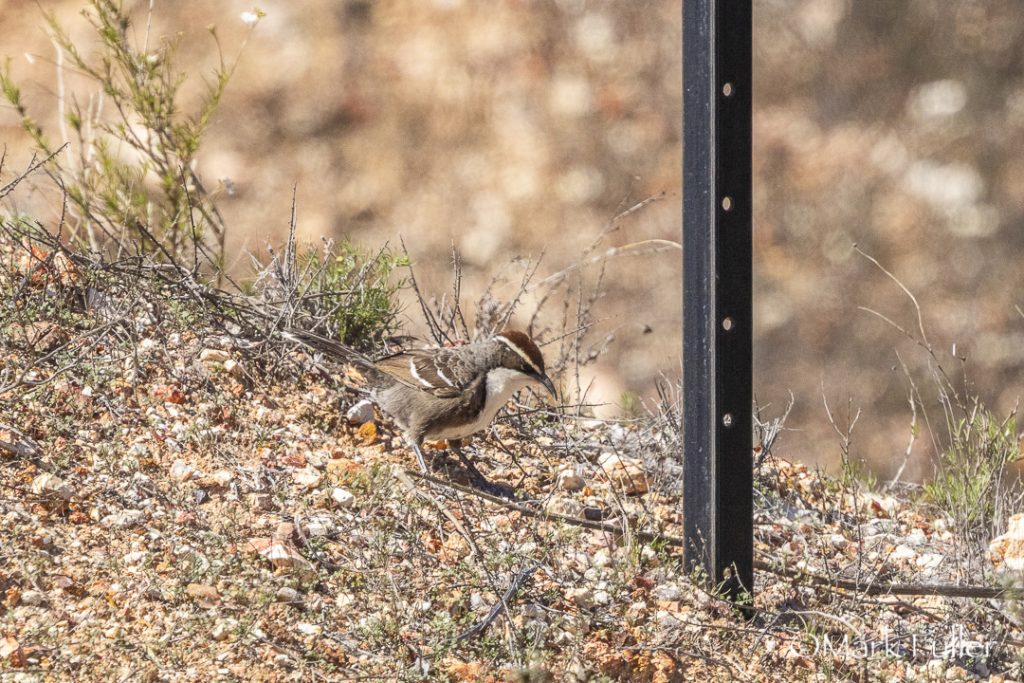
#287 Red-backed Kingfisher – Paroo-Darling NP
There were plenty of RBKFs seen on the Paroo-Darling surveys, often single birds or pairs. Their distinctive call heard at several sutes with nesting activity observed
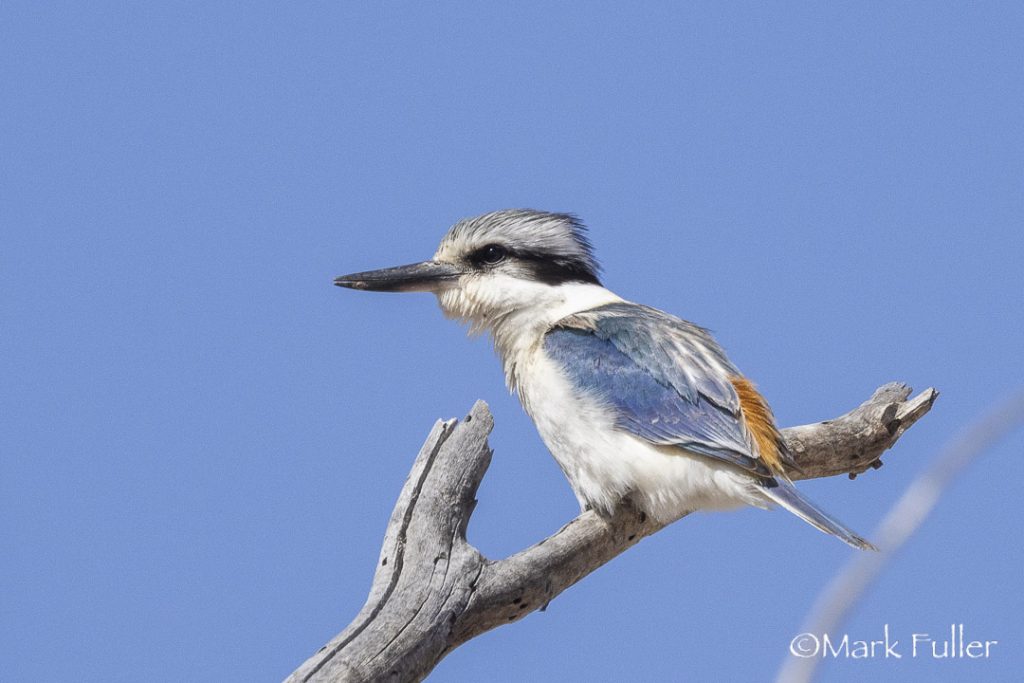
#286 Diamond Dove – Paroo-Darling NP
I always like seeing these tiny little Doves, it was great to find a small group of them near a creek, displaying courtship activity.

#285 Chestnut-rumped Thornbill – Paroo-Darling NP
It was interesting to take a closer look at the Inland & Chestnut-rumped Thornbills, both found west of the divide. There were other Thornbill spp. but these were the ‘Brown’ ones.

#284 Hall’s Babbler – Paroo-Darling NP
Usually a hard one to find due to its restricted distribution, we were lucky enough to have a small group of these rare Babblers close to our accommodation and were able to track them down on several occasions (although they remained elusive).

#283 Crested Bellbird – Paroo-Darling NP
This ‘lifer’ was a great addition to the list, not least for its wonderful resonating call. Although not seen in large numbers, most survey sites had a single bird calling from a suitable vantage point.

#281 Black Honeyeater – Paroo-Darling NP
Another ‘lifer’ that was very common among the flowering Eremophila in the Paroo-Darling National Park. Smaller than the Pied Honeyeater, the BHs reminded me of the more familiar Eastern Spinebills back home.
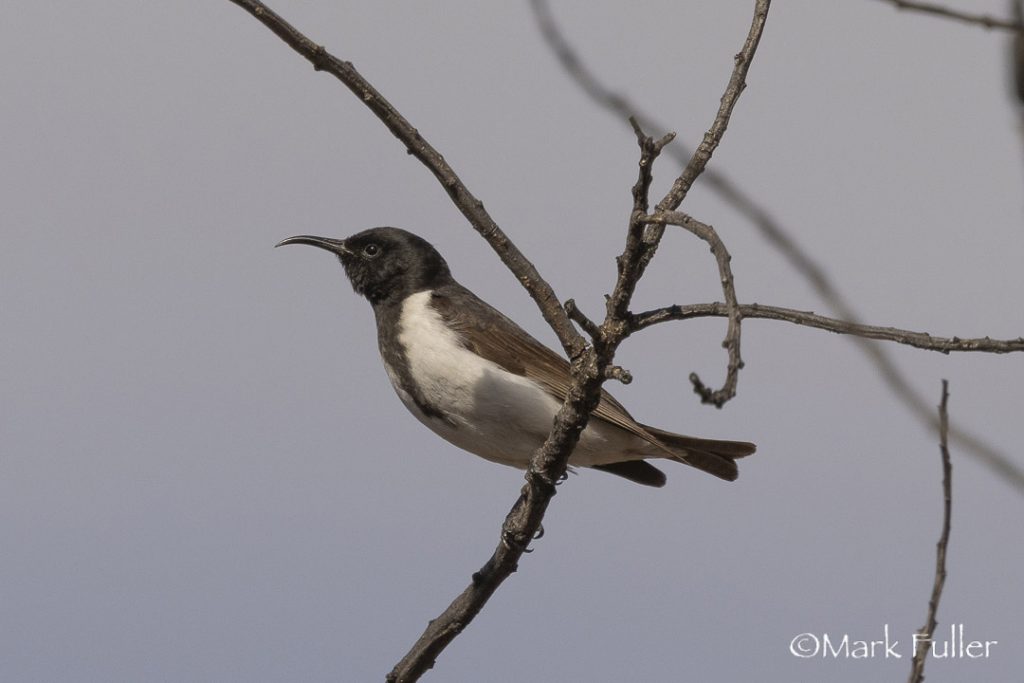
#280 White-fronted Honeyeater – Paroo-Darling NP
Another honeyeater that was seen (and heard) throughout most of our surveys in the Paroo-Darling National Park thanks to the abundant flowering Eremophila.

#279 Pied Honeyeater – Paroo-Darling NP
This was a ‘lifer’ for me as there were large numbers of these feeding on the flowering Eremophila, their incessant calls reminded me of the Little Grassbird. A constant for most of the surveys conducted in the Paroo-Darling NP

#278 Black-faced Woodswallow – Paroo-Darling NP
Another species picked up as we entered the Paroo-Darling National Park prior to starting our two weeks of surveying.
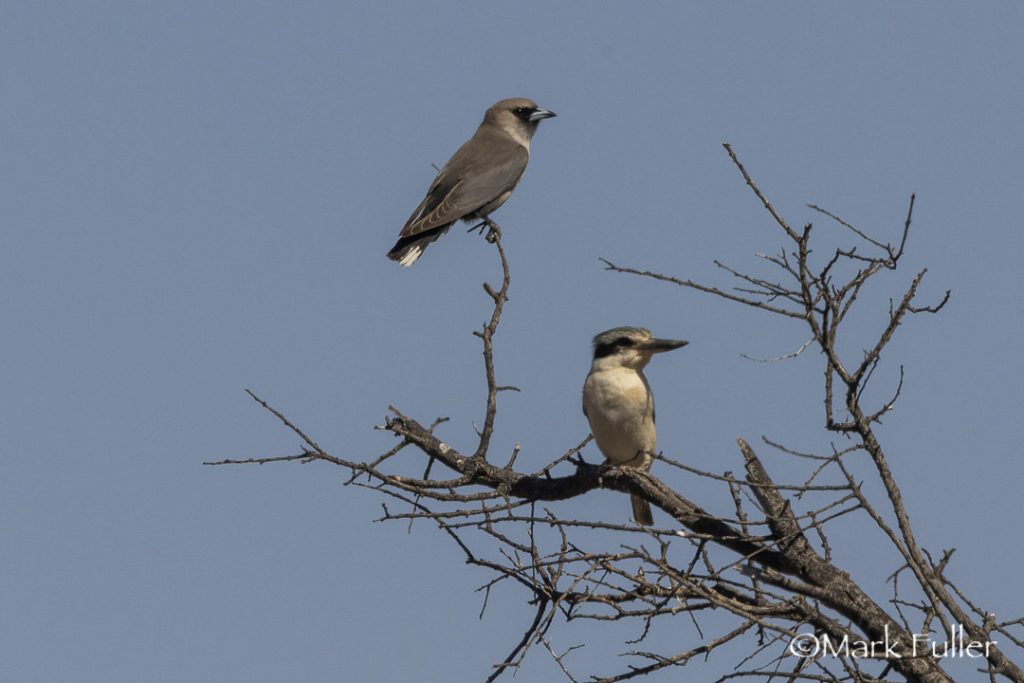
#277 Crimson Chat – Paroo-Darling NP
It was great to see thes bright red ‘jewels’ among the low scrub as we entered the Paroo-Darling National Park. This was the 2nd time I’d seen this species, my first was at Sydney Park many years ago.
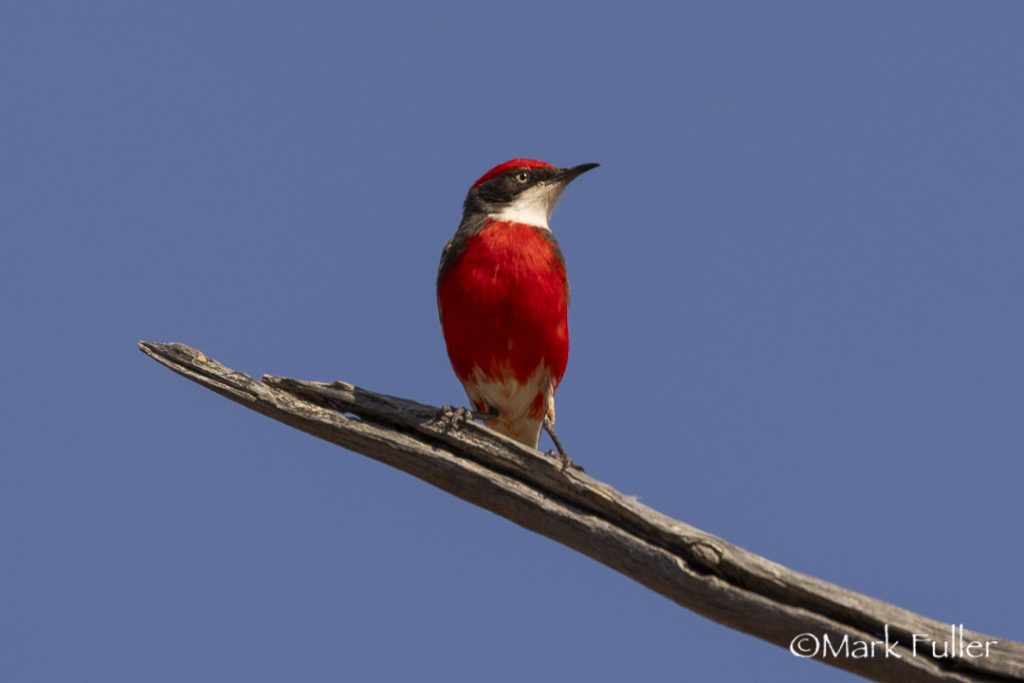
#275 White-winged Triller – White Cliffs
Large numbers of WWTs were seen and heard everywhere during the Paroo-Darling Bird surveys, the first sighting at White Cliffs.
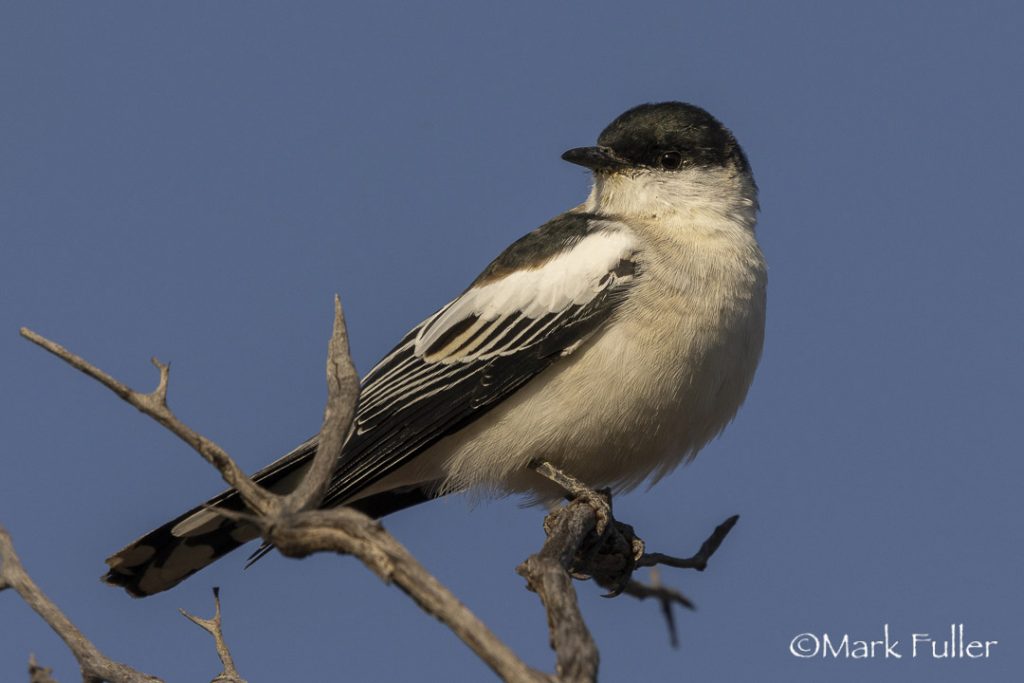
#274 Red-tailed Black-Cockatoo – Wilcannia
A large flock appear to be regulars in the Wilcannia township, we also met another birdo who showed us a huge tattoo he had of a RTBC on his back. On our way to the Paroo-Darling Bird surveys.
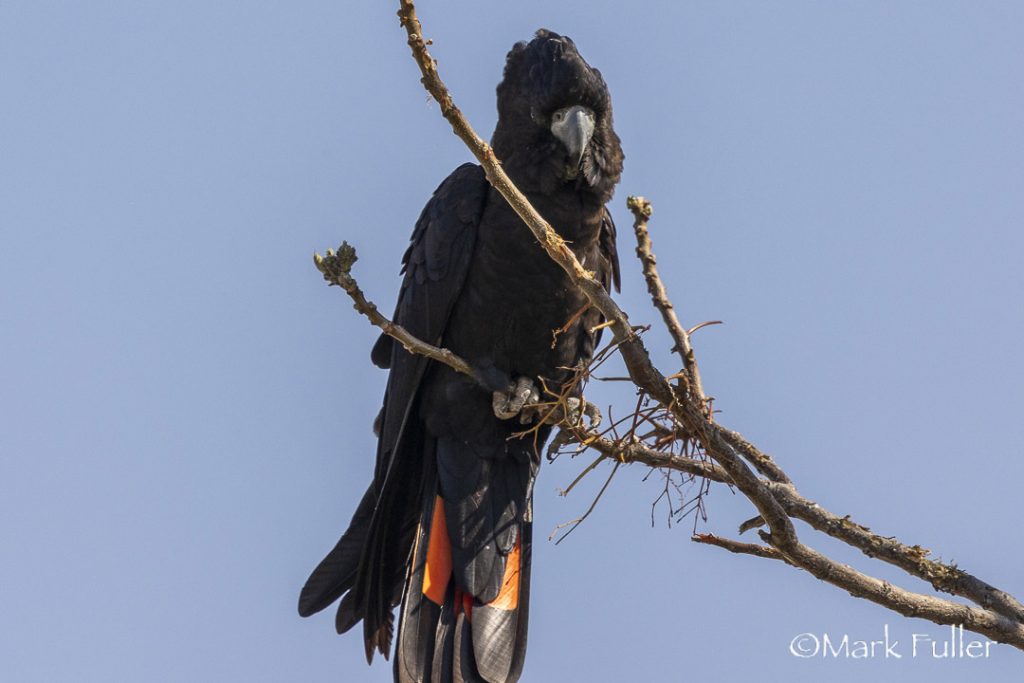
#272 White-breasted Woodswallow – Nyngan
I’m used to seeing WBWSs in coastal habitats north of Sydney so it was nice to see them in inland environments for a change. On our way to the Paroo-Darling Bird surveys.
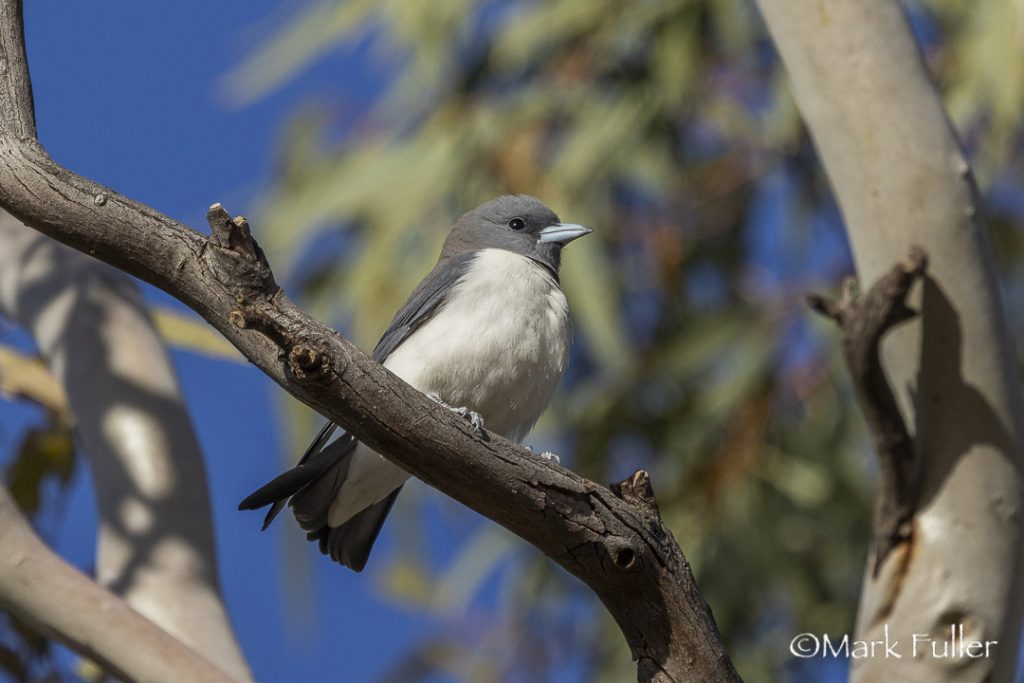
#271 Little Friarbird – Nyngan
Not a regular visitor to inland NSW, it took a while to get my ear in, the call of the Little Friarbird grabbing my curiosity. Once seen and confirmed it was w welcome addition to my inland list. On our way to the Paroo-Darling Bird surveys.

#270 Black Kite – Nyngan
The first bird on my way to conduct the Paroo-Darling National Park Bird surveys was a Black Kite seen at Nyngan.
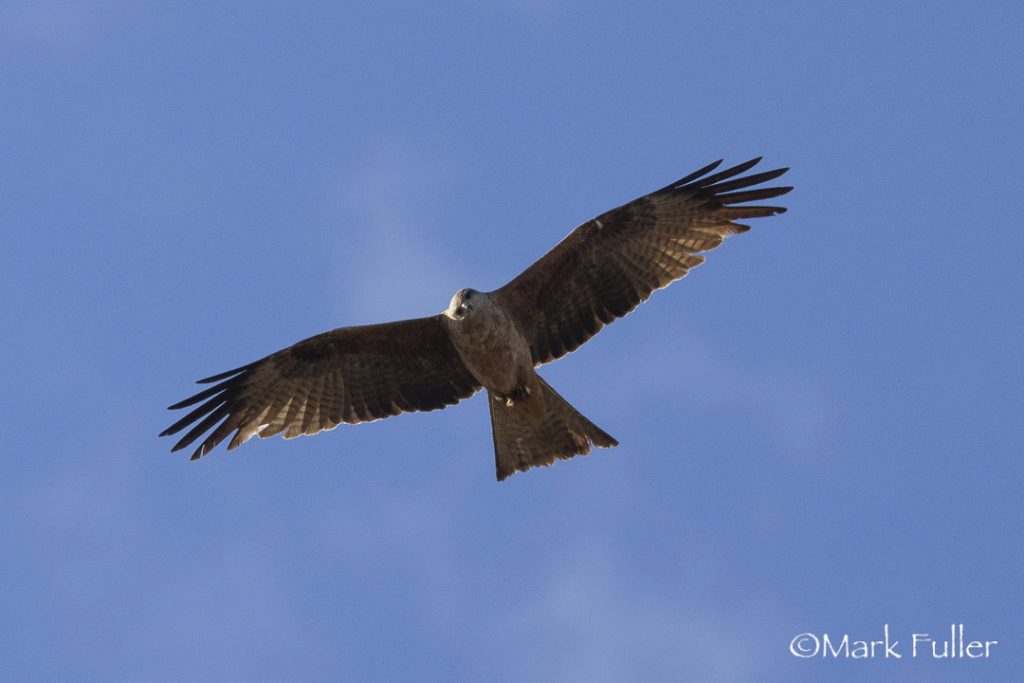
#269 Flame Robin – Lithgow
Another trip west of the mountains got me #269 the Flame Robin, well 8 of them actually, 5 males & 3 females. Blast Furnace Park is a well-known location and didn’t disappoint.
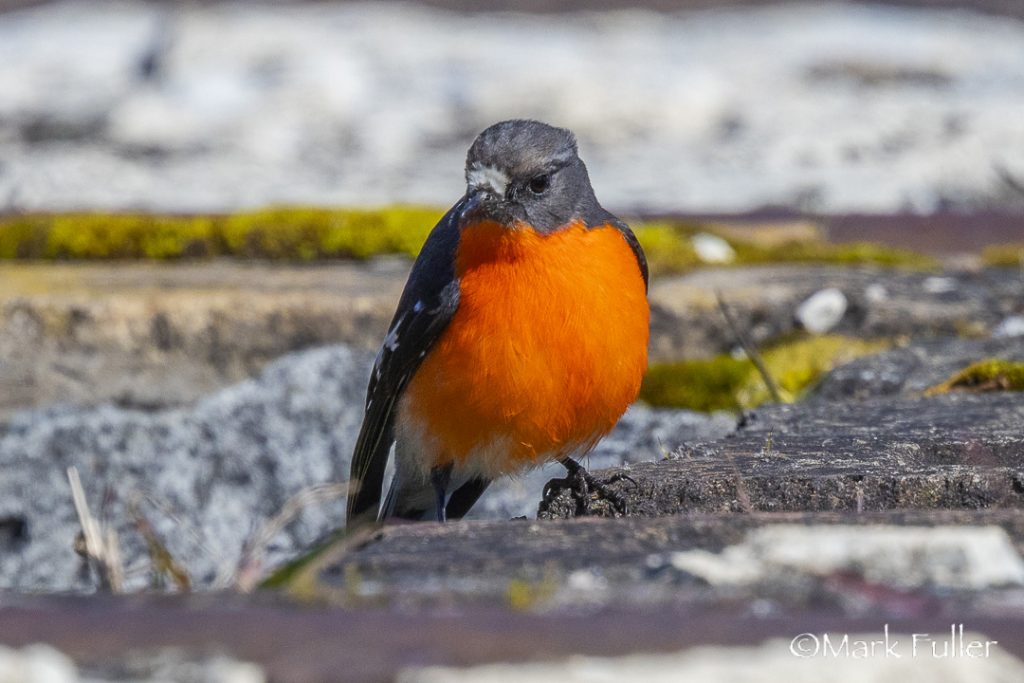
#267 Musk Duck – Lake Wallace
An frosty early morning visit out past Lithgow (it was -3°) bought its own rewards with good views of several Musk Duck.
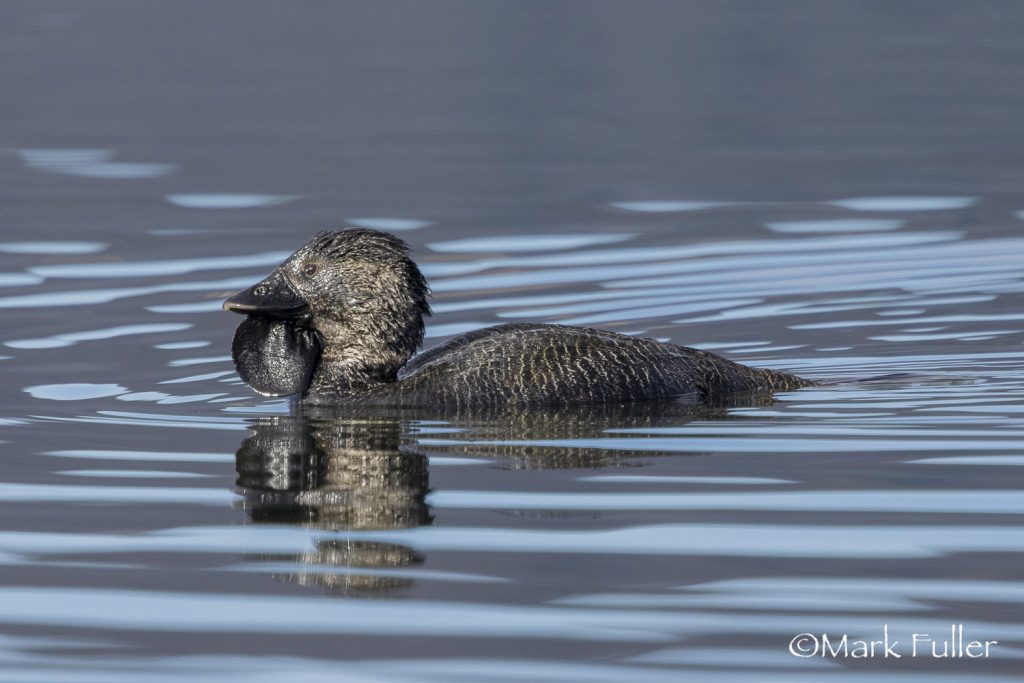
#266 Pilotbird – Evans Lookout
It was nice to find a ‘local’ bird, well the Blue Mountains, on an overcast mid-morning walk
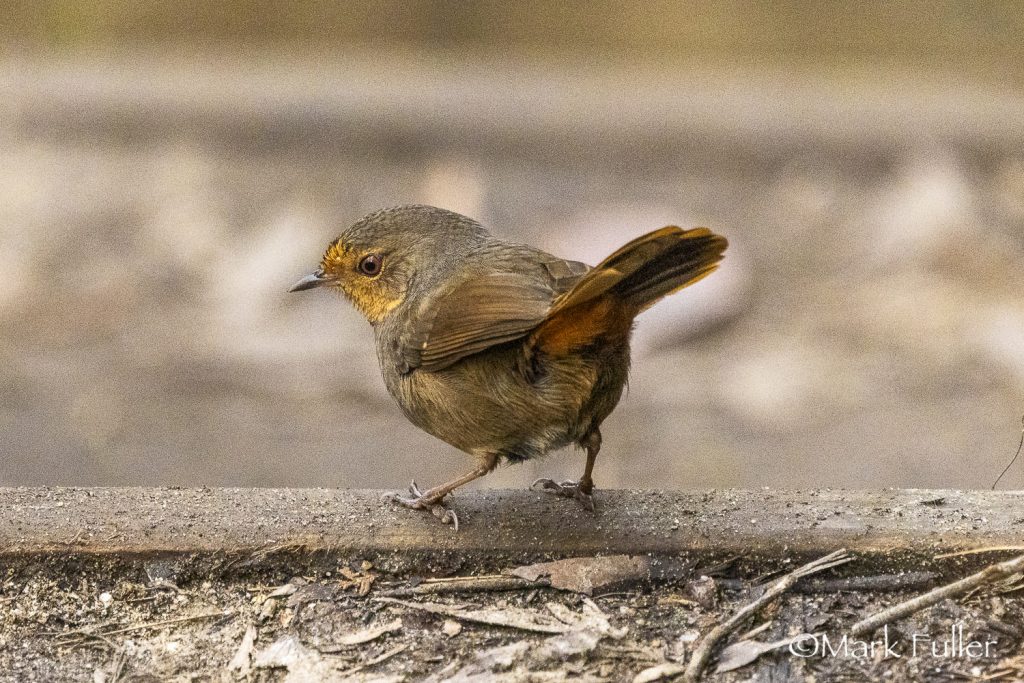
#264 Mangrove Gerygone – Hexham Swamp
I managed to find #264 by searching any significant stands of Mangroves on my last morning in Newcastle, then popped over to the Wetland Centre to pick up #265, a group of loafing Magpie-Geese.
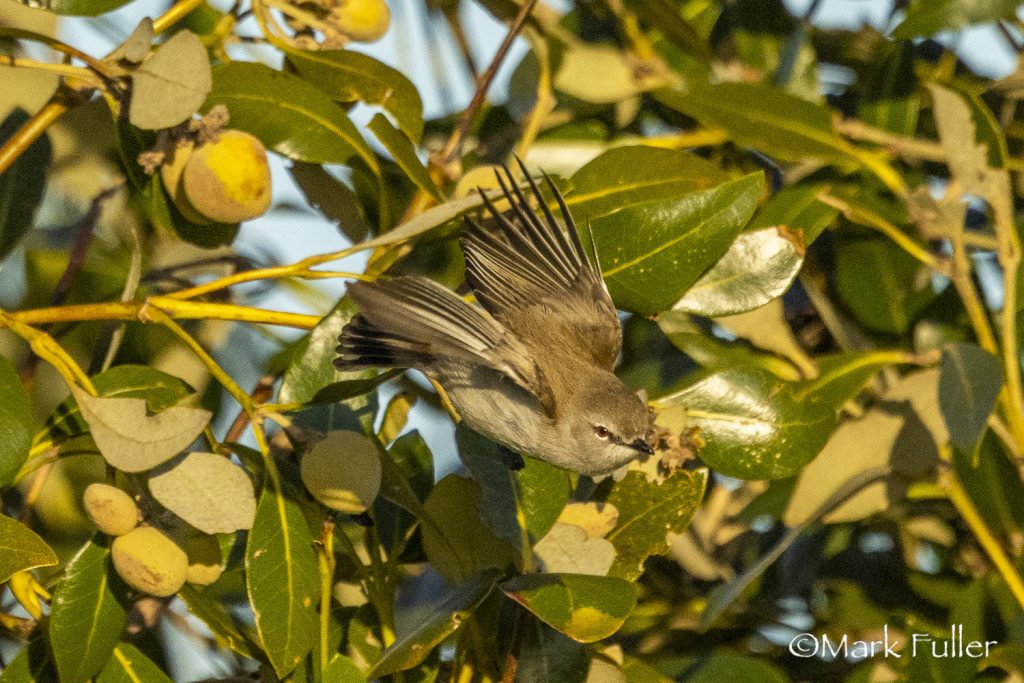
#263 White-fronted Tern – Newcastle Baths
One good Tern deserves another, and while I was confident of seeing some Greater Crested Terns I was unsure that the White-fronted Terns would be there, I needn’t of worried, there quite a few.
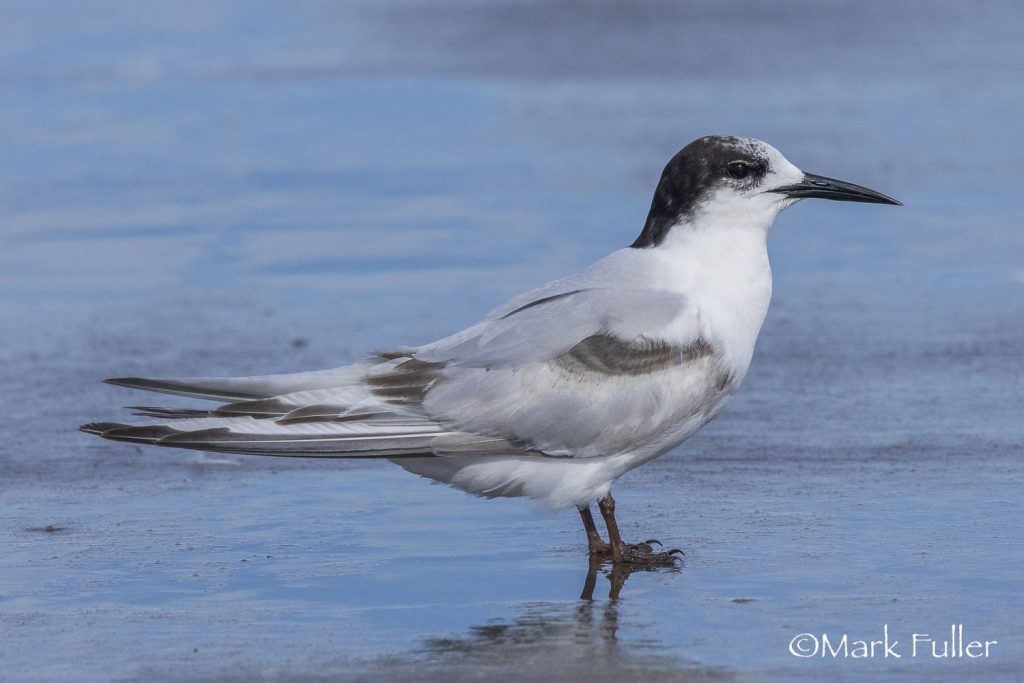
#262 Australasian Bittern – Hexham Swamp
Two visits the previous day (early morning & late afternoon) didn’t get any results but an early morning visit on the second day was a mixed blessing as two photographers flushed the Bittern within 15 minutes of my arrival.
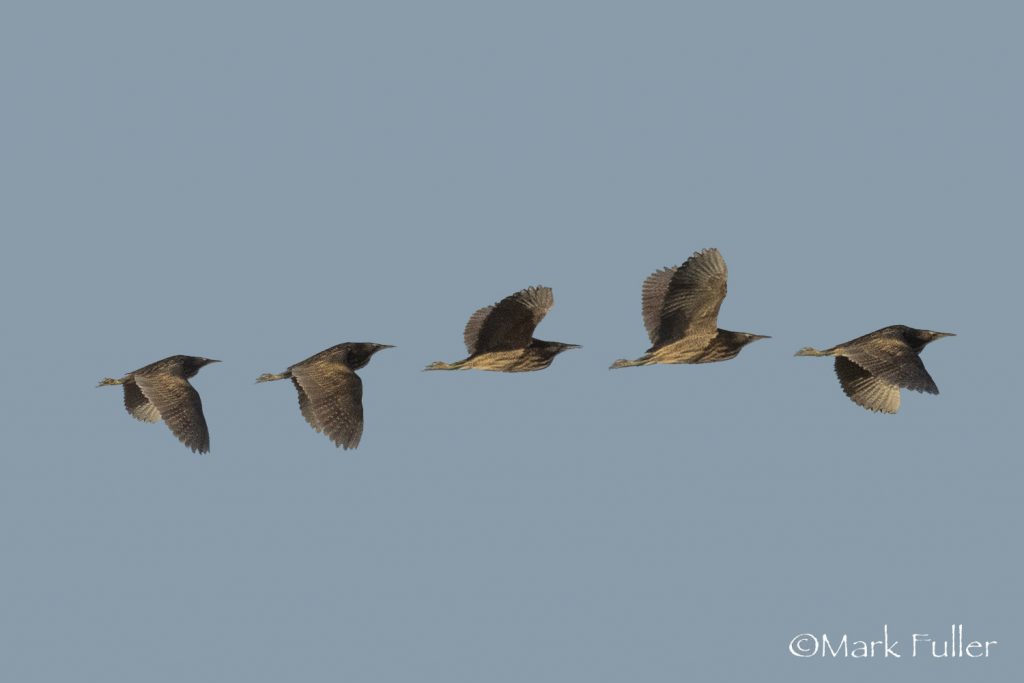
#261 Swift Parrot – ‘Wombat’ CLC property
Not only one of the rarest birds, but 24 of them on a property belonging to Cumberland Land Conservancy (CLC), an organisation myself and others established 10 years ago to manage and protect critical Cumberland Plain habitat within the Cumberland Conservation Corridor. Our first Swift Parrot record a fitting reward for 10 years of environmental restoration work.

#260 Red-browed Treecreeper – Woodford
Not as common as the White-throated Treecreeper, it was nice to find this bird among the canopy as I explored the gullies along the Transit of Venus track, a 5 minute drive from where I live.

#258 Eastern Osprey – Toukley
It was great to find a pair of these raptors at a nest site in a busy sports oval on a trip to the Central Coast, they were completely unfazed by the activity below.

#256 Plumed Egret – McPherson Swamp
Formerly known as Intermediate Egret, not always easy to pick so it’s nice when you can see the plumes.

#255 Regent Bowerbird – Ourimbah
Always worth checking out the rest stop at Ourimbah where fruiting Privet attracted large flocks of Regent Bowerbirds, at least 50 seen over a 20 minute period, probably more.
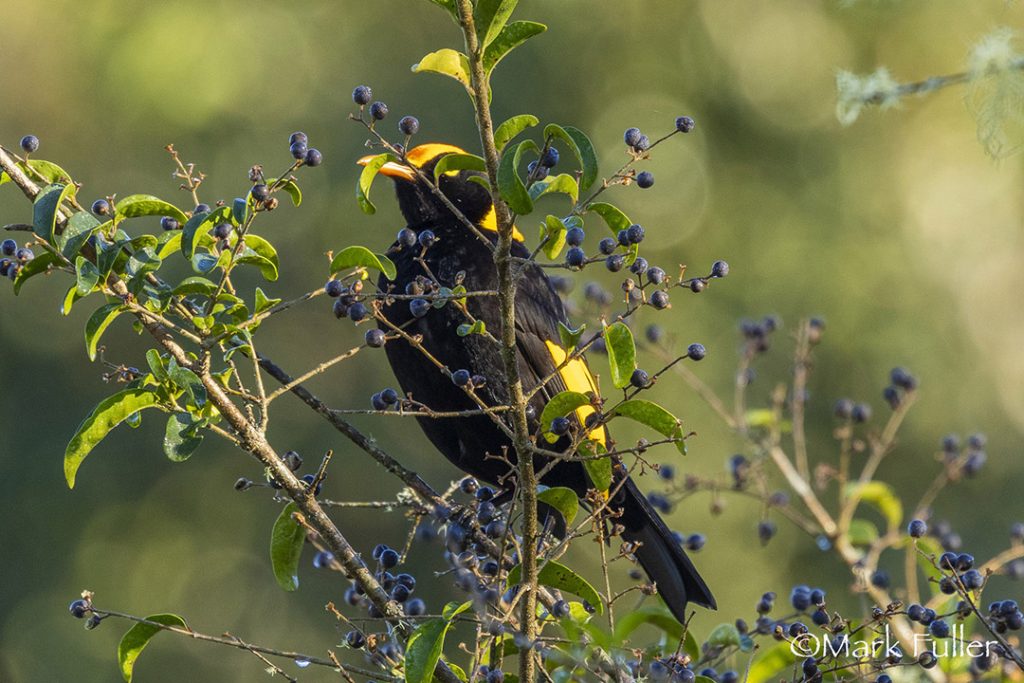
#251 Grey Currawong – Blackheath
Not an easy one to find among the numerous Pied Currawong, a bit shyer and a lot rarer, but I was lucky to get good views of this bird along Hat Hill Road.

#249 Topknot Pigeon – North Arm Reserve
I’ve been leading walks for Willoughby Council since 2022 so it was nice to find a ‘new’ bird for 2025, and most unexpected.
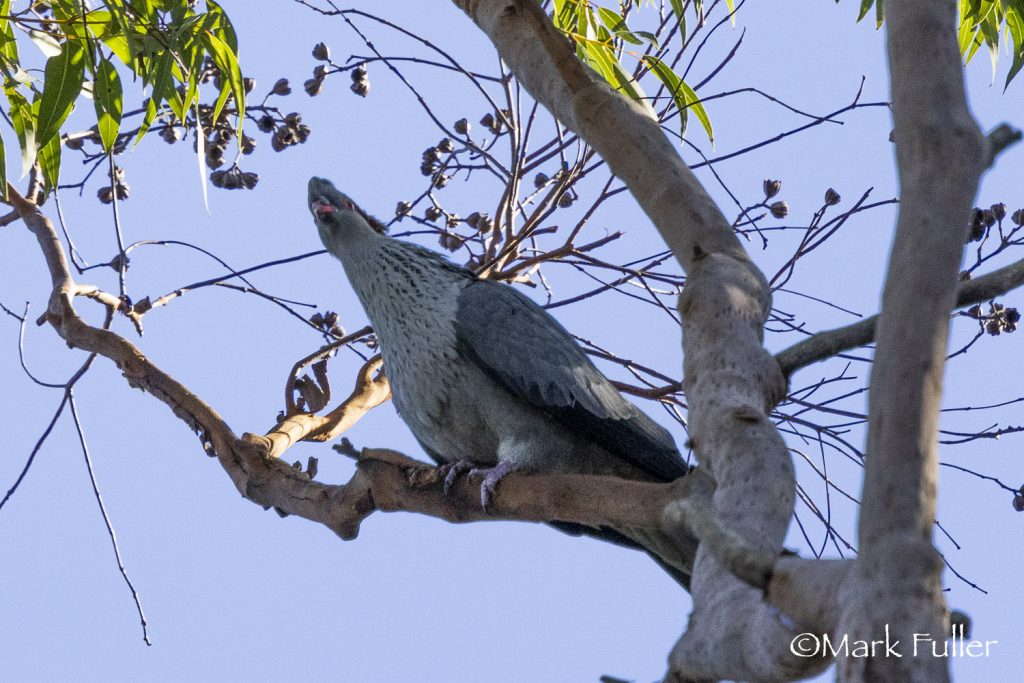
#246 Glossy Black-Cockatoo – Ulladulla
A visit to the headland at Ulladulla was made complete when we found a group of three Glossy Black-Cockatoos quietly feeding on Casuarina seeds, as per the interpretive signs.
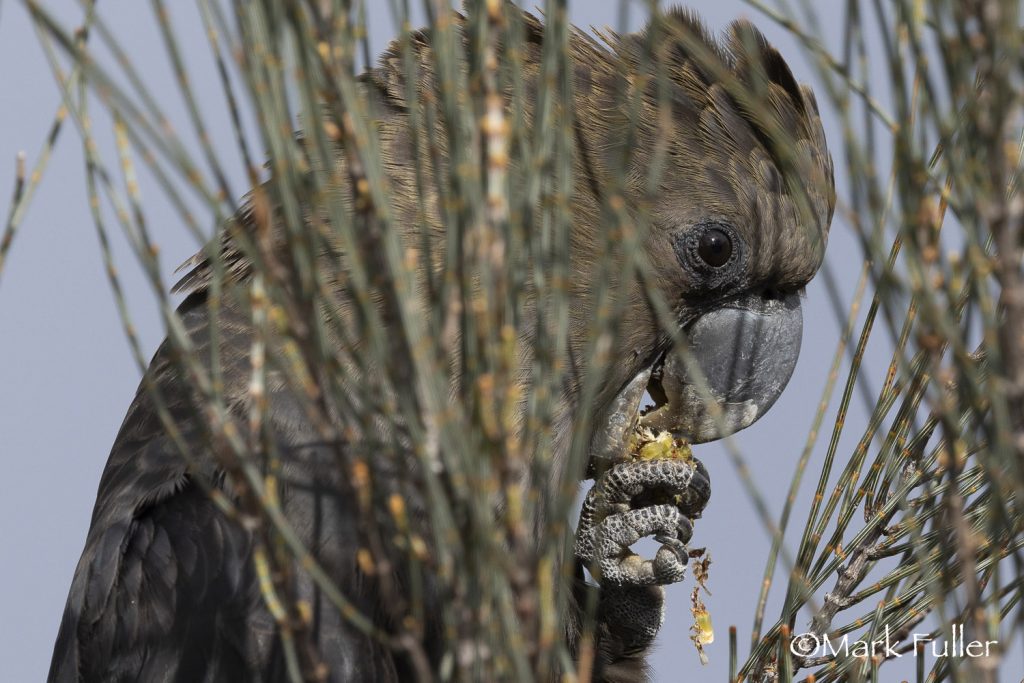
#244 Pacific Reef Heron – Racecourse Beach
Distracted by a young White-bellied Sea Eagle flying over I then glanced toward the rock platform to see a Reef Heron eating a large fish.
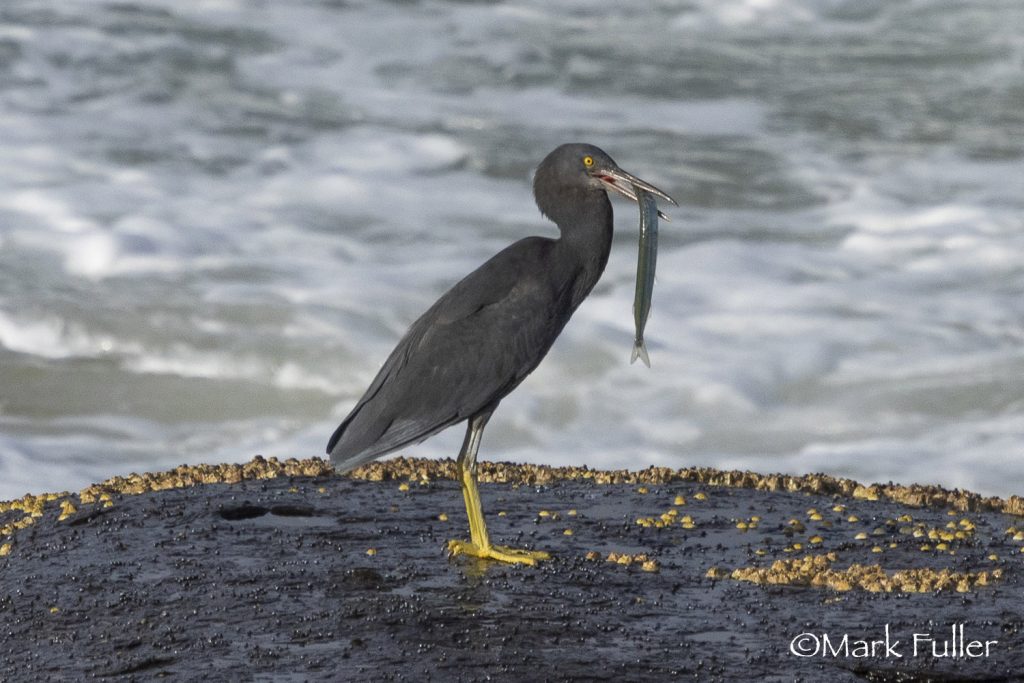
#243 Hooded Plover – Racecourse Beach
A well-known location, it was good to spend some time (and read the tags) of these rare waders.

#240 Scarlet Robin – Linden Ridge
I noticed recent hazard control burning on this local walk and have seen Scarlet Robins in recently burnt areas before. Then just as I was returning to the car, a pair appeared right in front of me.
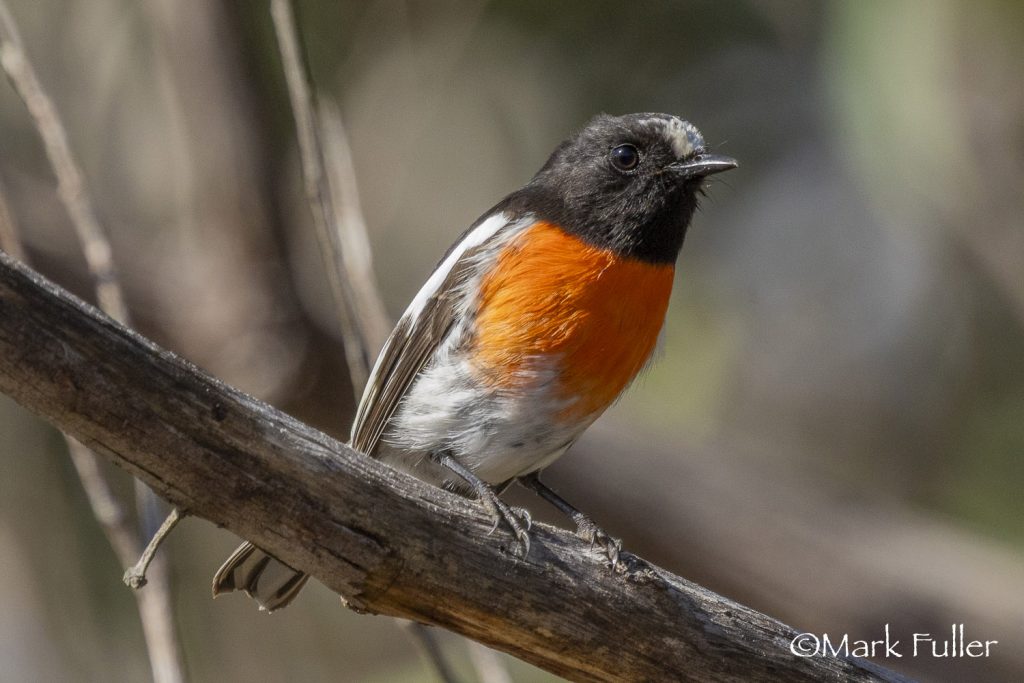
#239 Little Lorikeet – Wianamatta RP
Good to pick up a new species while leading a well-attended walk (this time for the Cumberland Bird Observers Club)
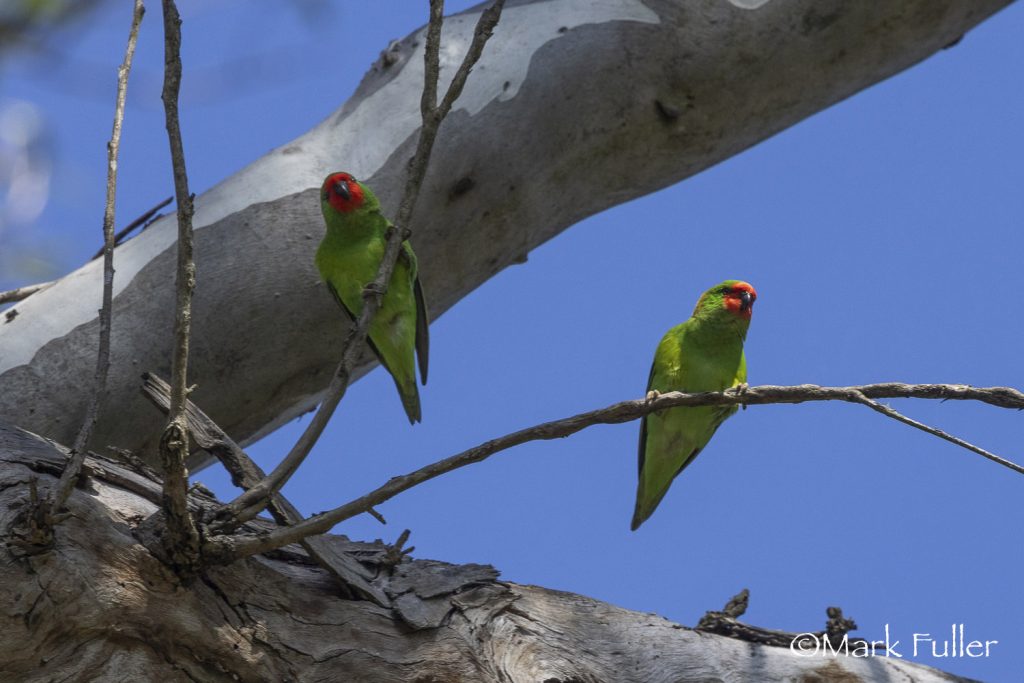
#234 Freckled Duck – Blaney Showground
Thanks to a tipoff at the Cowra Bird survey we stopped off to check out an unassuming dam at Blaney Showground where I added the rare Freckled Duck and #235 Australian Shelduck to my 2025 list
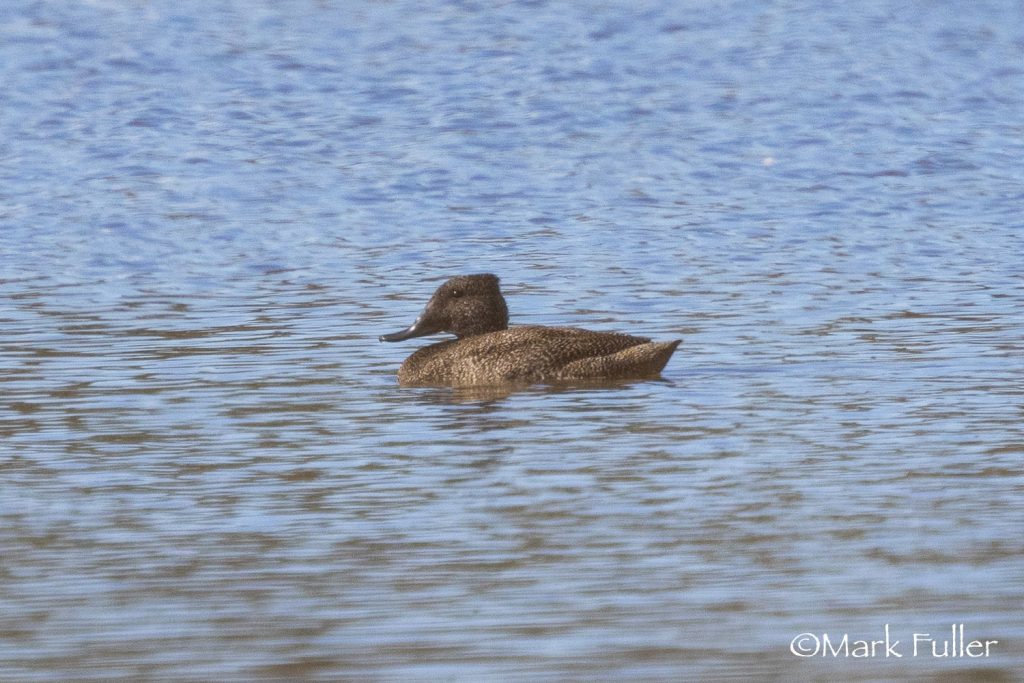
#232 Little Eagle – Cowra
A little R’nR on a warm afternoon at Elsie Vale Rd gave me my first Little Eagle for 2025 during the Cowra Woodland Bird surveys.
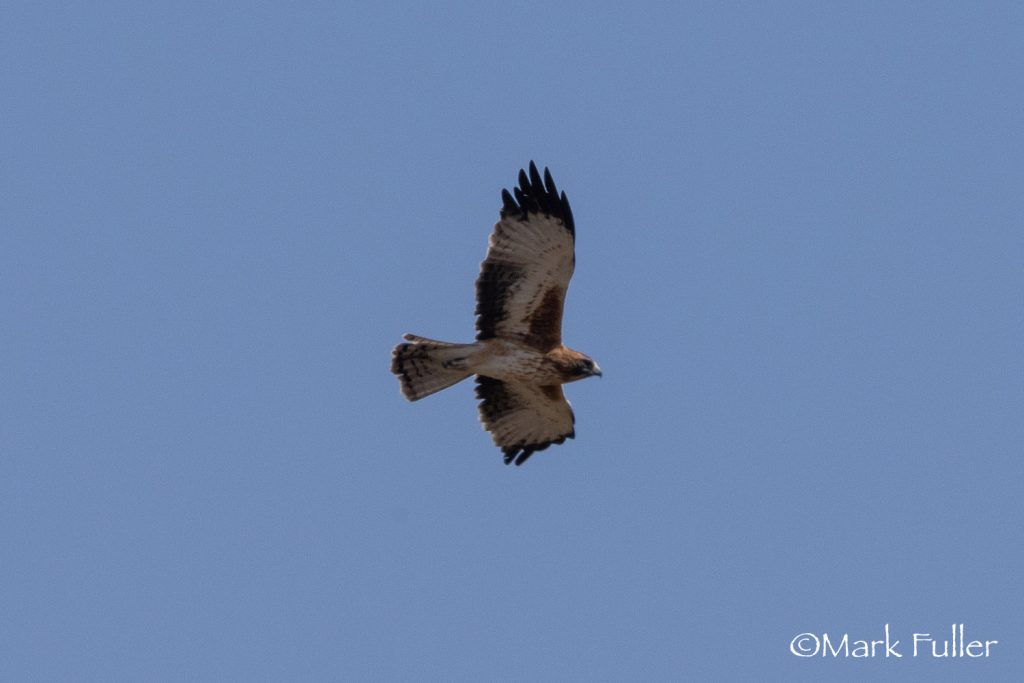
#230 Black Falcon – Cowra
I was awestruck as a pair of Black Falcons hunting co-operatively, took out a Crested Pigeon with tremendous force at Morongla Cemetry, our survey site on the Cowra Woodland Birds Porgram.

#229 Gilbert’s Whistler – Round Hill NR
I originally thought this plain female whistler was a Red-lored, but small details, ie beak shape pointed toward Gilbert’s. I wasn’t too upset as either would’ve been a ‘lifer’ for me

#225 Blue-billed Duck – Lake Cargelligo
Affectionately known as the ‘Poo Ponds’ Lake Cargelligo Wastewater Treatment Plant is well worth a visit. I wasn’t impressed with the bird hide which looked like a bus stop, but it worked…
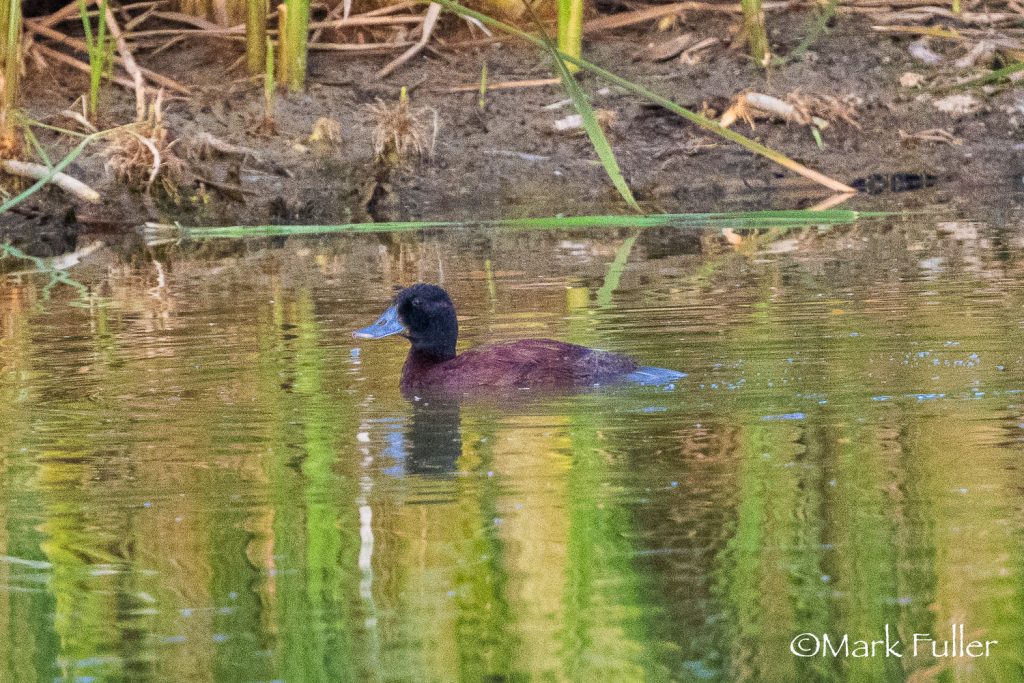
#224 Cockatiel – Curlew Waters
Nice to see these parrots zipping around the place, nicer still when they stop for a while and allow me to get a photo.

#219 Yellow-plumed Honeyeater – Round Hill
It was pretty quiet in the middle of a warm day at Round Hill Nature Reserve, although there weren’t many birds nearly every one we saw was pretty special, with 10 species added to my 2025 list.

#217 Red-capped Robin – Round Hill
We managed to see several Red-capped Robins, both males and females, at various locations at Round Hill.
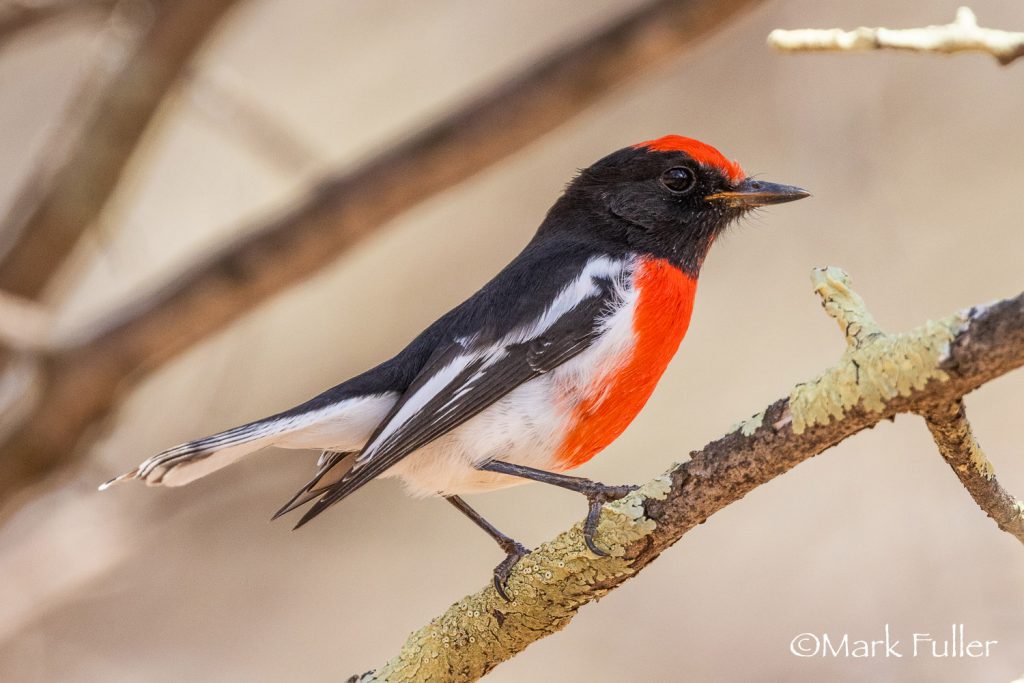
#211 White-fronted Chat – Chat Alley
Some nice, small birds at Chat Alley, the White-fronted being the only one of the Chats observed.
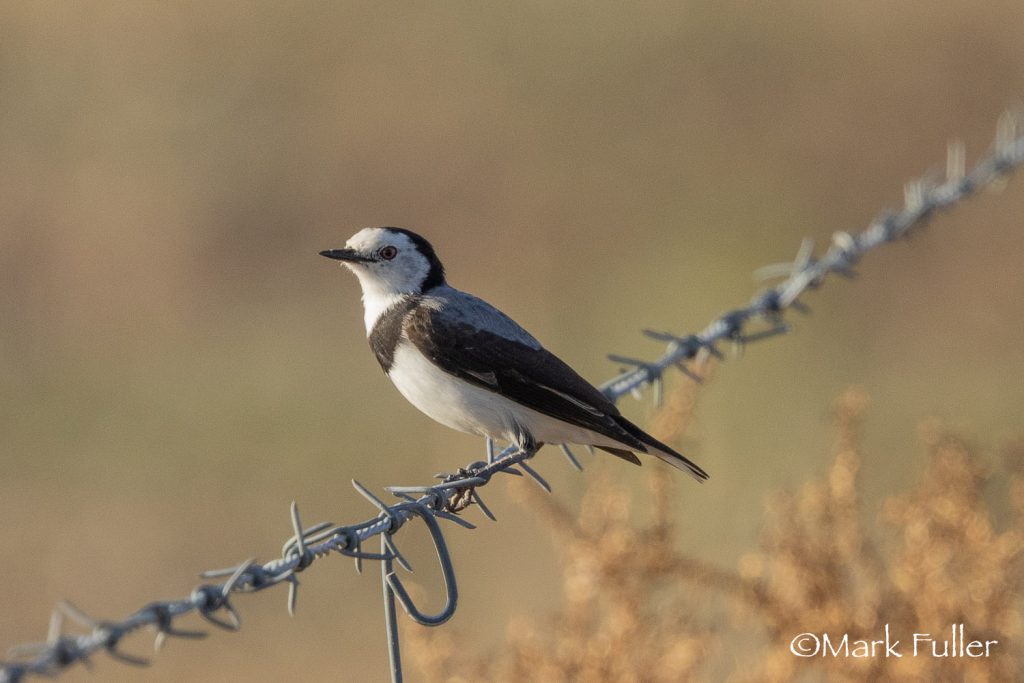
#206 Spiny-cheeked Honeyeater – Bland
It was almost like adding species in alphabetical order when we added a Spiny-cheeked Honeyeater added to the list.
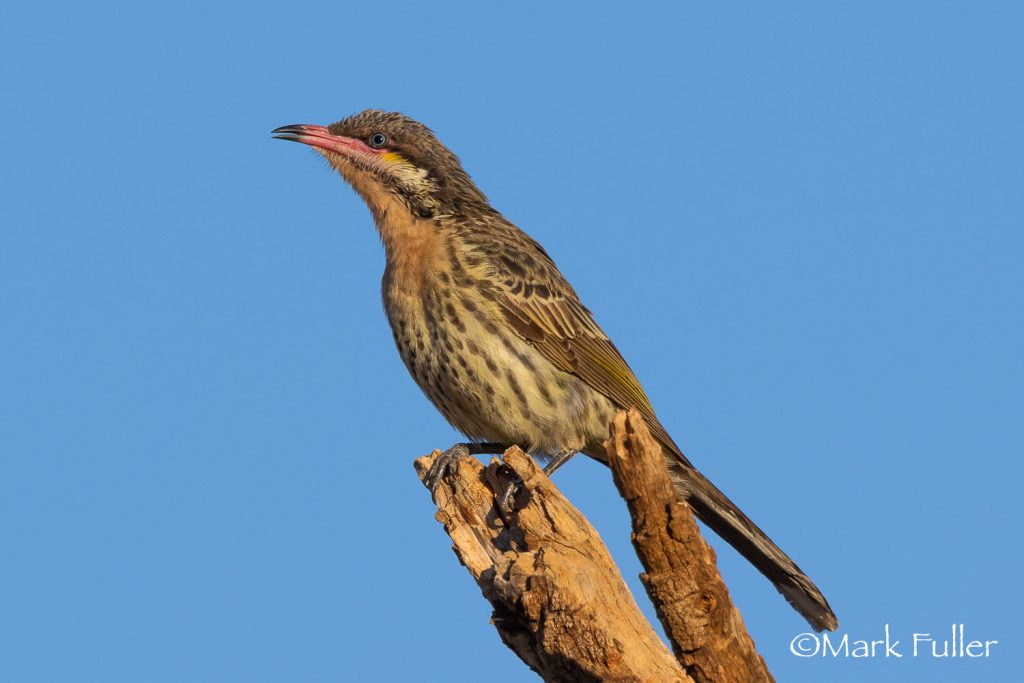
#205 Spotted Harrier – Bland
A stop off at Bland on the way to West Wyalong was anything but with a Spotted Harrier added to the list.
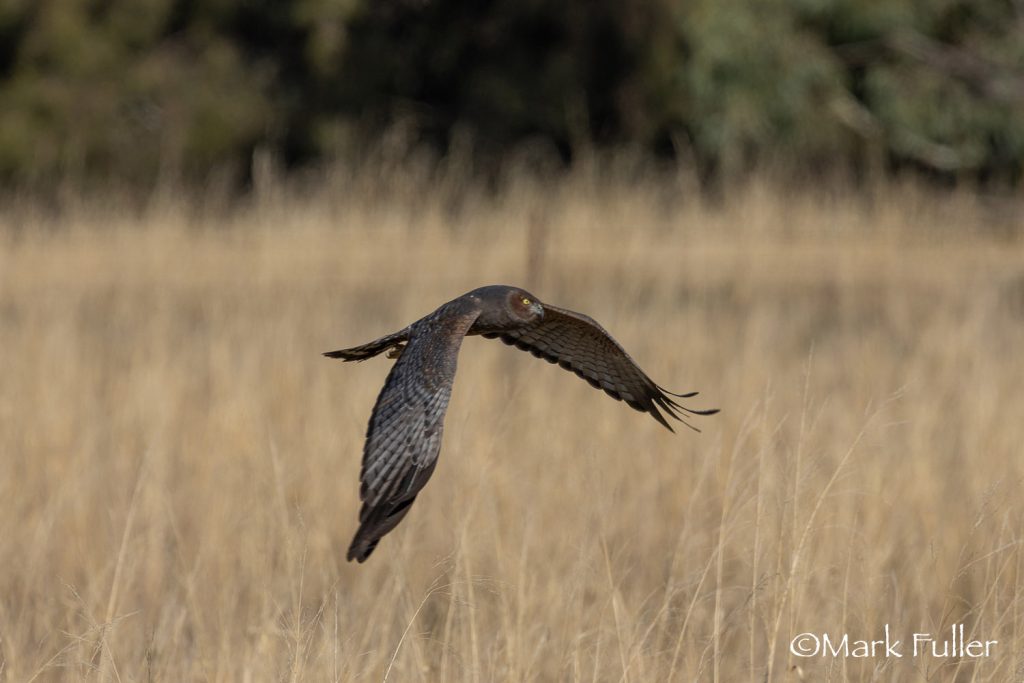
#202 Inland Thornbill – Bumbaldry
The good thing about going to inland NSW is seeing inland species, while I’m used to Brown Thornbills, this one was similar but different, the chestnut rump helping to confirm ID.
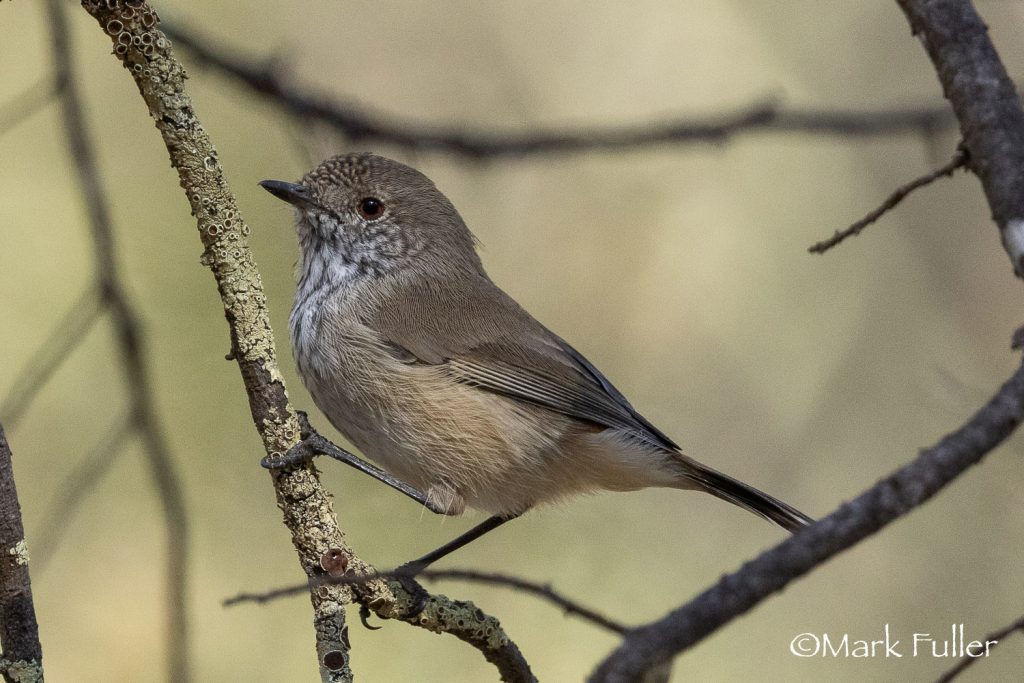
#200 Powerful Owl – Second Ponds Creek
Bulbul alarm calls alerted us to two large owls roosting high in the canopy at second Ponds Creek. We’d already heard a nocturnal bird, #199 an Owlet-nightjar but couldn’t locate it, so it was a real bonus to see these sleepy Powerful Owls looking down at us.
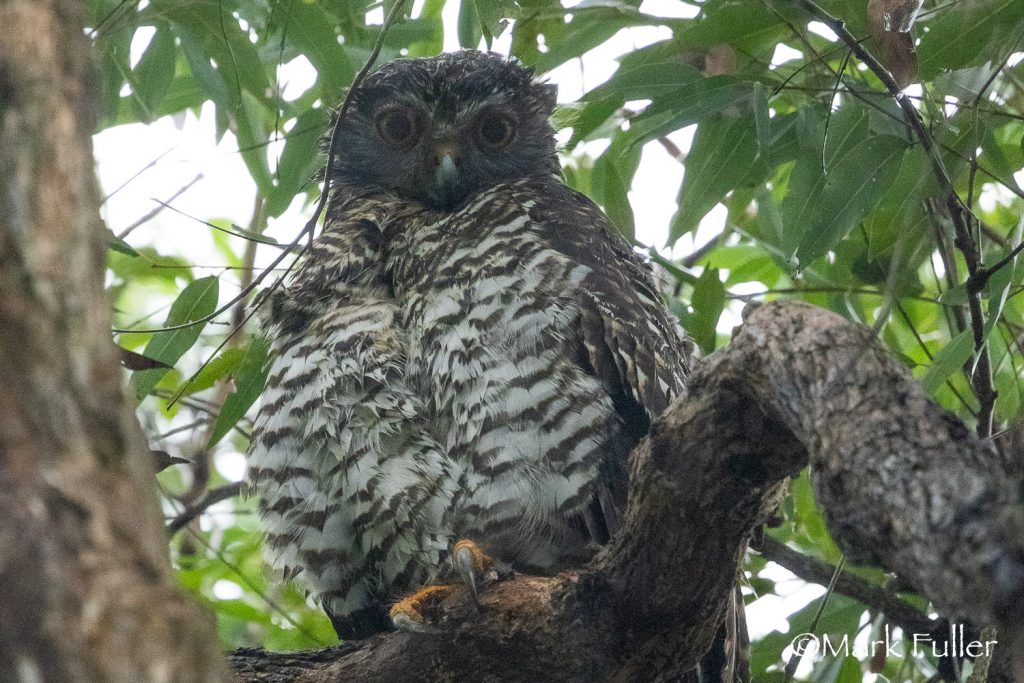
#198 Rockwarbler – Evans Lookout
An early stopoff after a sleepover shift was a great way to start the day with a Rockwarbler, the only endemic species to New South Wales, seen in the car park at first light at this reliable location.
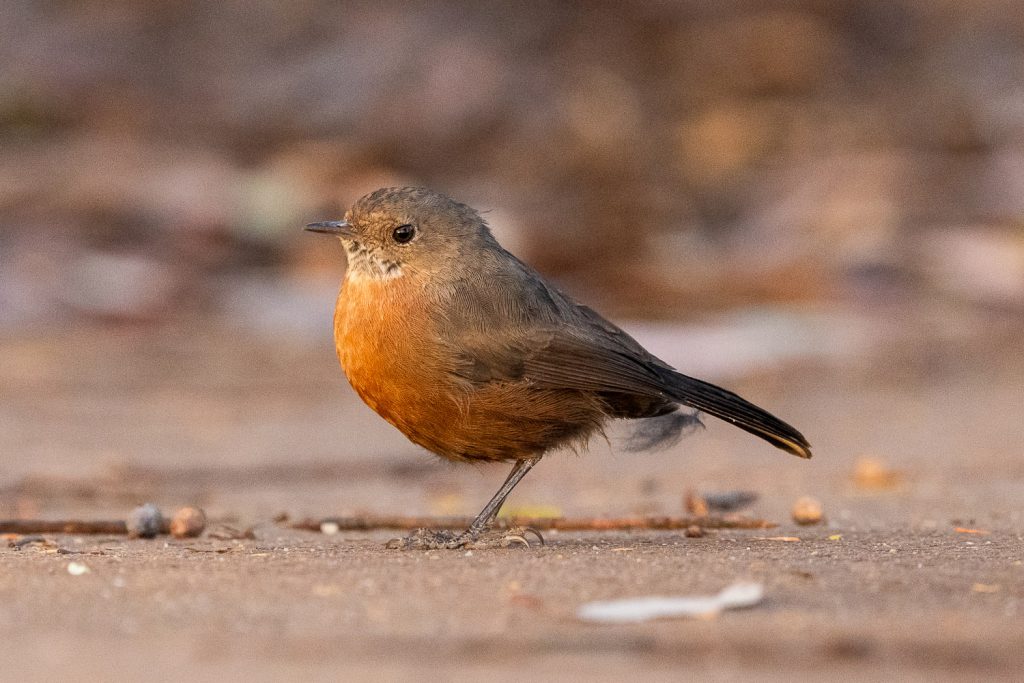
#186 Eastern Bristlebird – Beecroft Weapons Range
I don’t know if it was the conditions or the ongoing conservation efforts, but the Eastern Bristlebirds were everywhere in suitable habitat on the south coast, the first ones seen scampering around the Bristlebird sign.
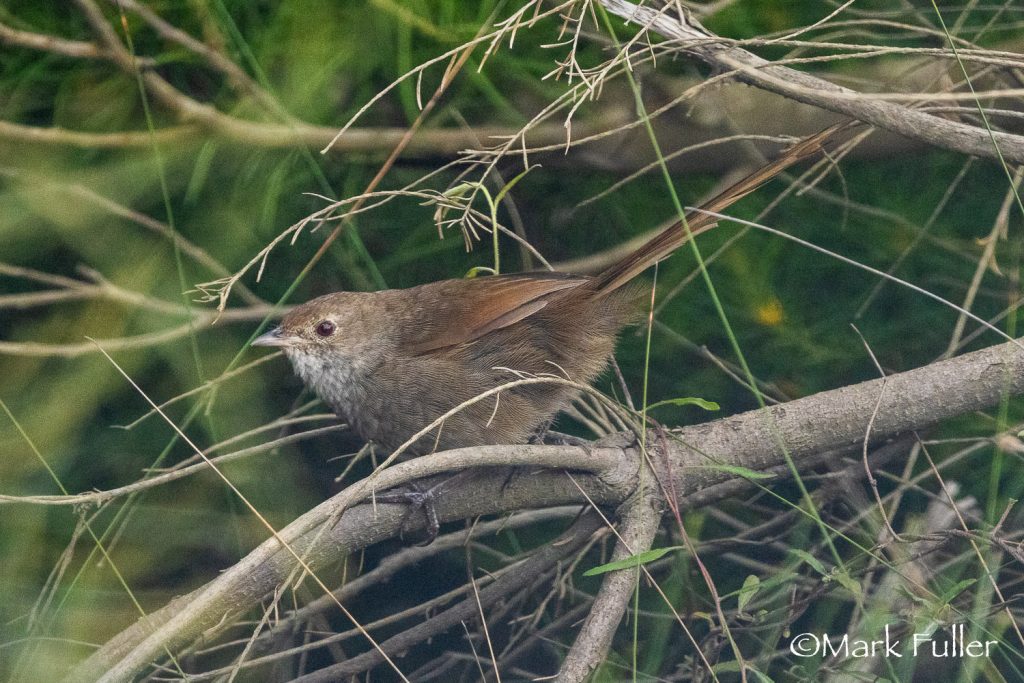
#183 Ground Parrot – Beecroft Weapons Range
Seeing this lifer was an amazing experience and had taken me 20 years of walking in cold, wet heathlands before finally getting my ‘bogey’ bird. Not only did I ‘get’ it, but there were quite a few, including cooperative individuals that fed on grass seed, oblivious to my presence. They gave me plenty of time to observe their amazing pattern on an almost luminous green body at close quarters, it was well worth the wait.
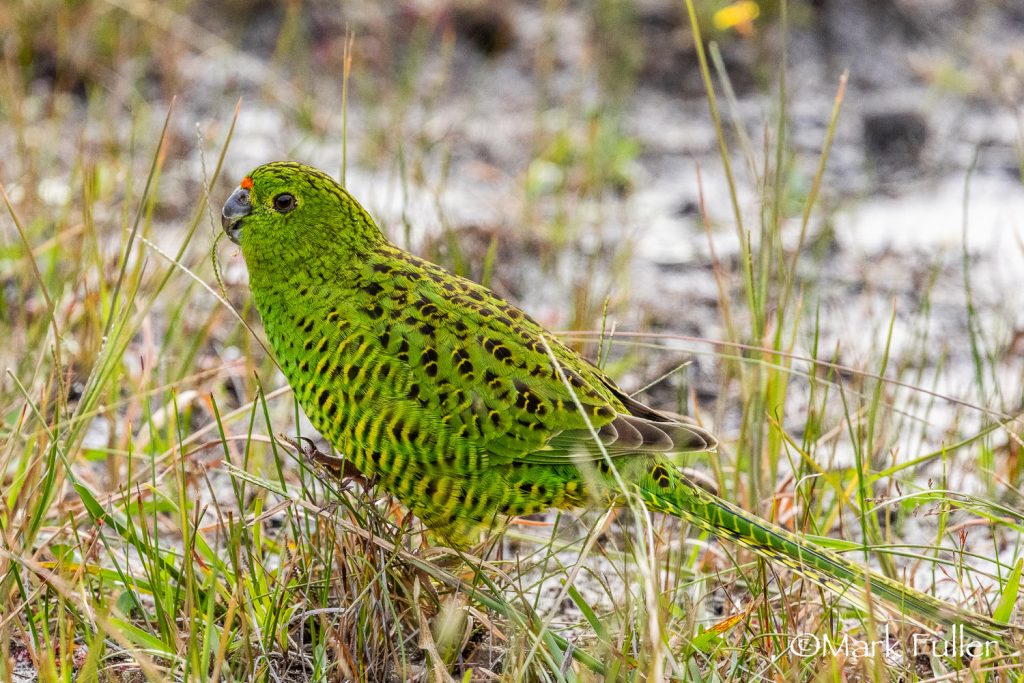
#180 Spangled Drongo – Western Sydney Parklands (Glendenning)
It was great to find a Drongo on the first day of March, an Autumn visitor to Sydney from Queensland (that’s why they’re Drongos) their numbers fluctuate so can be difficult to find in some years. Luckily the bumper Cicada summer meant there was plenty of food to attract them.
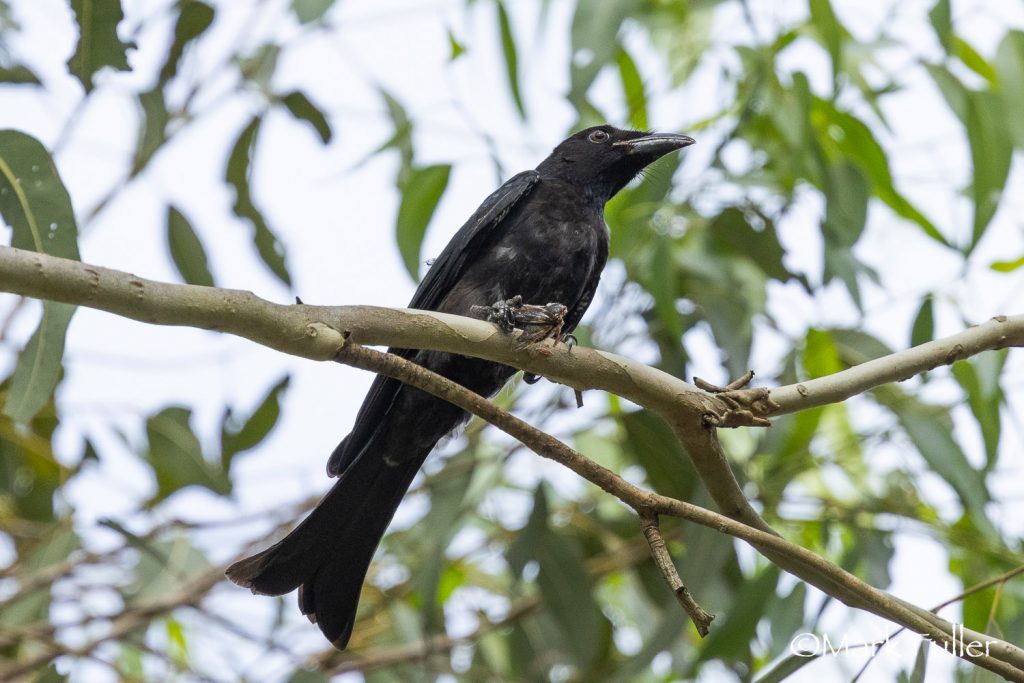
#179 Eastern Shrike-tit – Western Sydney Parklands (Glendenning)
Formerly known as the Crested Shrike-tit, I had a great experience watching this handsome-looking bird feeding on a grub, pulled from exfoliated bark using its powerful beak.
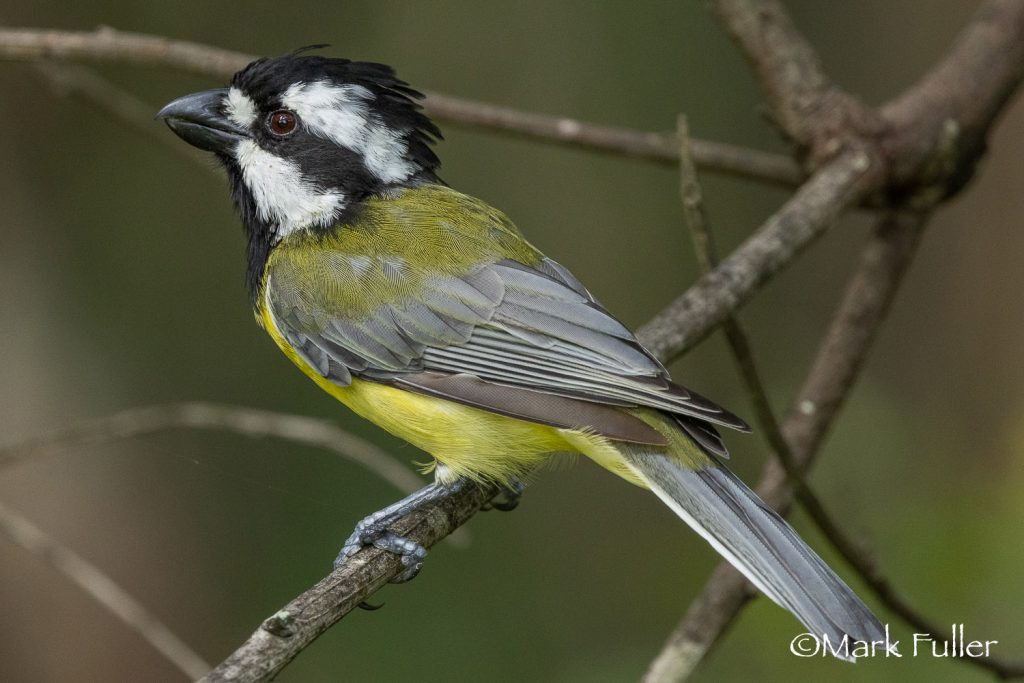
#176 Australian Hobby – Richmond Lowlands
I was pleased to find this small Falcon perched in a tree on a visit to Richmond Lowlands, it’s nice to have a Hobby!
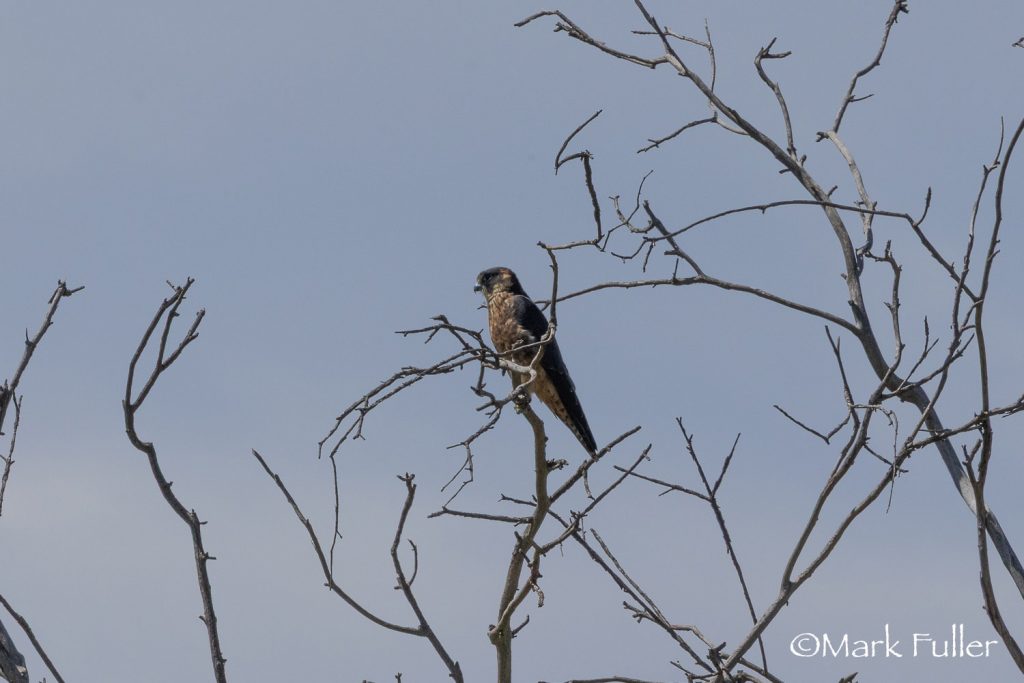
#173 Diamond Firetail – Clover Leigh GC
Despite the weather it was birds galore at Clover Leigh, with this sighting also helping to brighten up the afternoon.
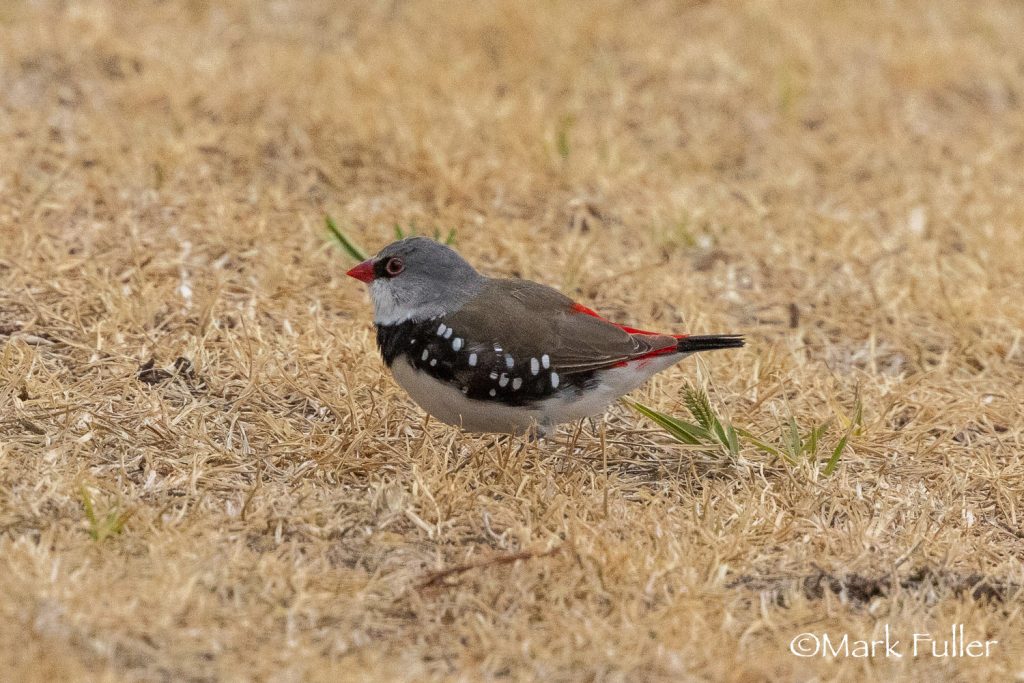
#169 Turquoise Parrot – Clover Leigh GC
It was overcast with showers when we headed out to Clover Leigh Golf Course for a bit of R’n’R between the Cowra Woodland Bird Surveys. A highlight was watching small flocks of ‘Turks’ zipping around roadside trees.

#158 Wedge-tailed Eagle – Flat Rock Reserve
I had distant but prolonged views (and a poor photo) of a bird soaring high in the sky at Flat Rock, so have decided to use a photograph of a perched bird seen at Cowra the following day, it just looks so magnificent!
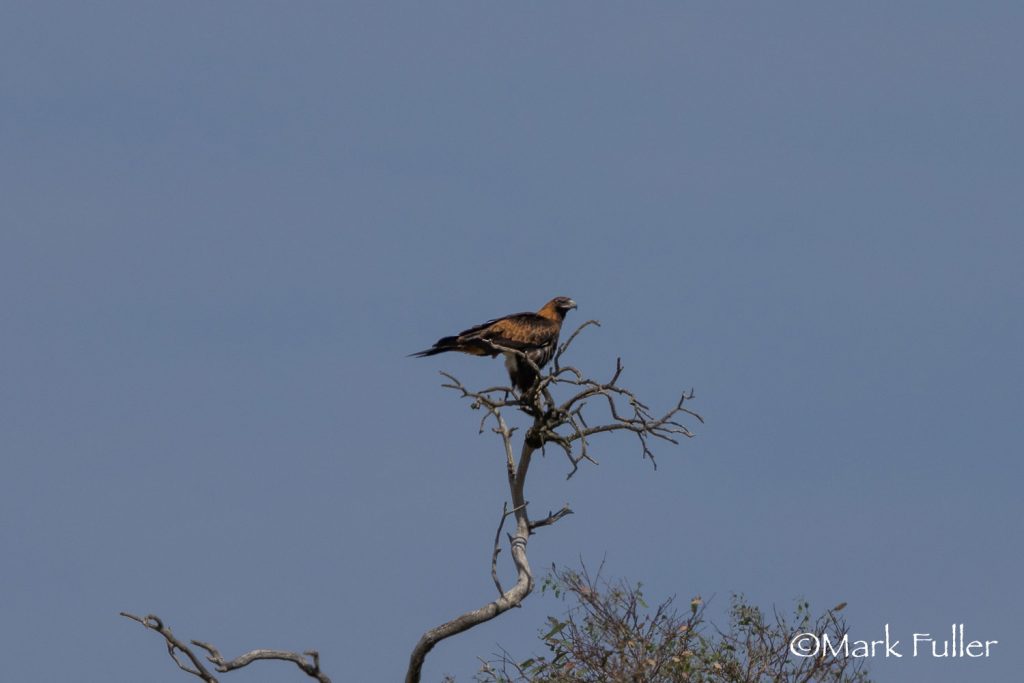
#151 Bar-shouldered Dove – Emu Green
A walk around Emu Green added another 3 species to my yearly list, including this Bar-shouldered Dove
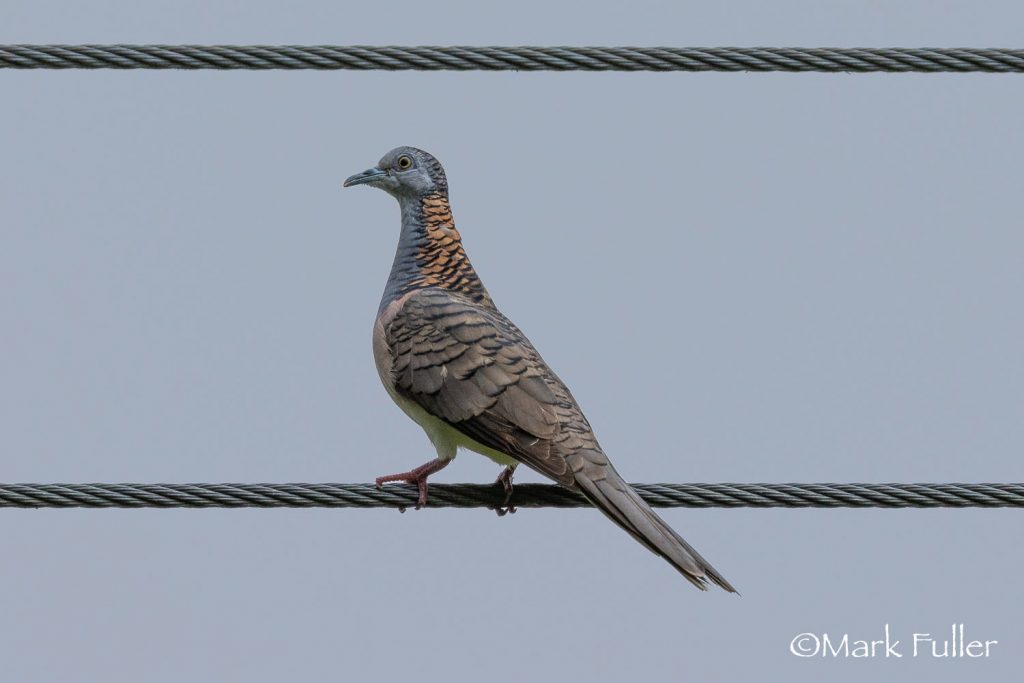
#140 Noisy Pitta – Palmdale Road
It was eciting to hear the call of the Noisy Pitta along Palmdale Road, with some brief glimpses as it flew from deep cover into more deep cover. I was able to get close, but getting the photo did prove difficult.
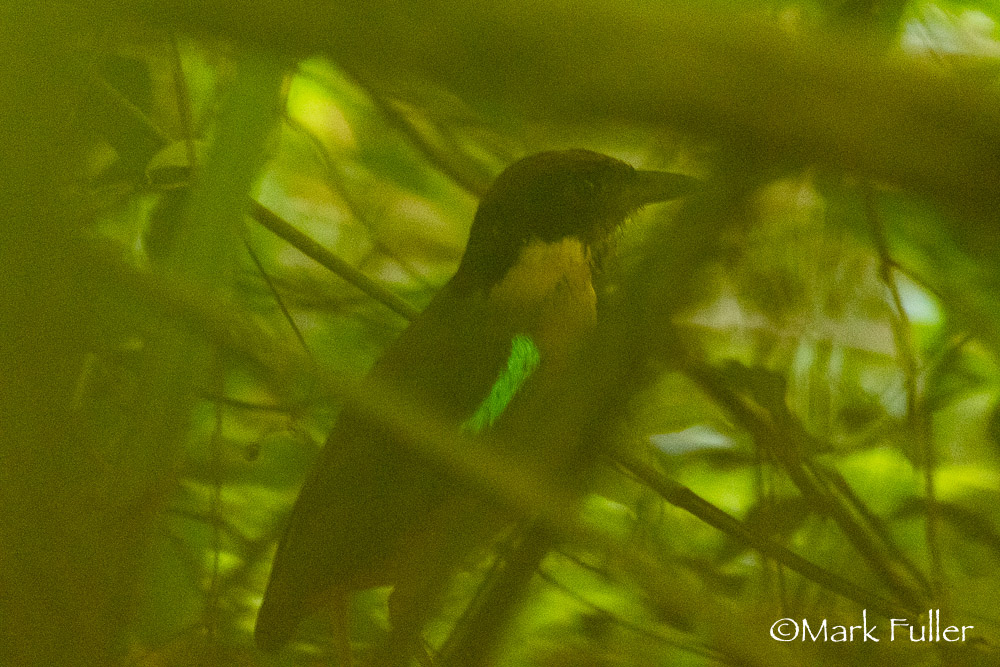
#138 Rufous Fantail – Ourimbah Rest Stop
Always fleeting (and usually in the shade) I didn’t get a chance to photograph the Rufous Fantail flitting around among the deep vegetation at the Ourimbah Rest Stop
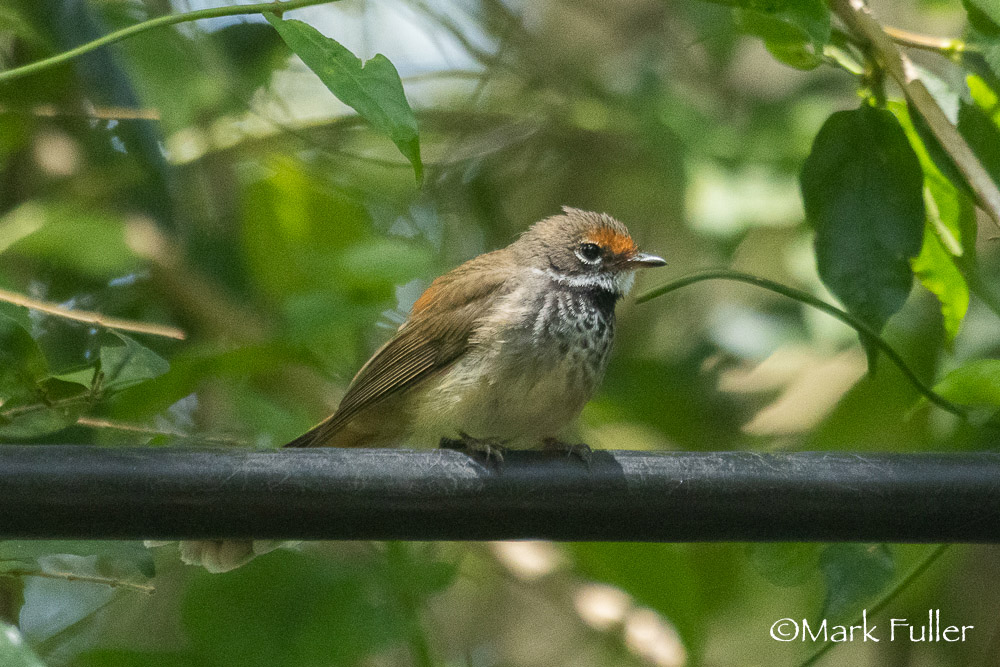
#133 Little Bittern – Sydney Olympic Park
We conducted the annual Snipe Survey in pouring rain, managing to flush at least four individuals. As we finished I looked across the lake and their in full view was a male Black-backed (formerly Little) Bittern. Very distant but a nice ‘record shot’ of Australia’s smallest Bittern.

#116 Striated Heron – Penrith Weir
Despite getting 14 ‘new’ birds for the year and some great photos, there was only twice that I managed to get a photo of of new bird, the second one was this distant Striated Heron.
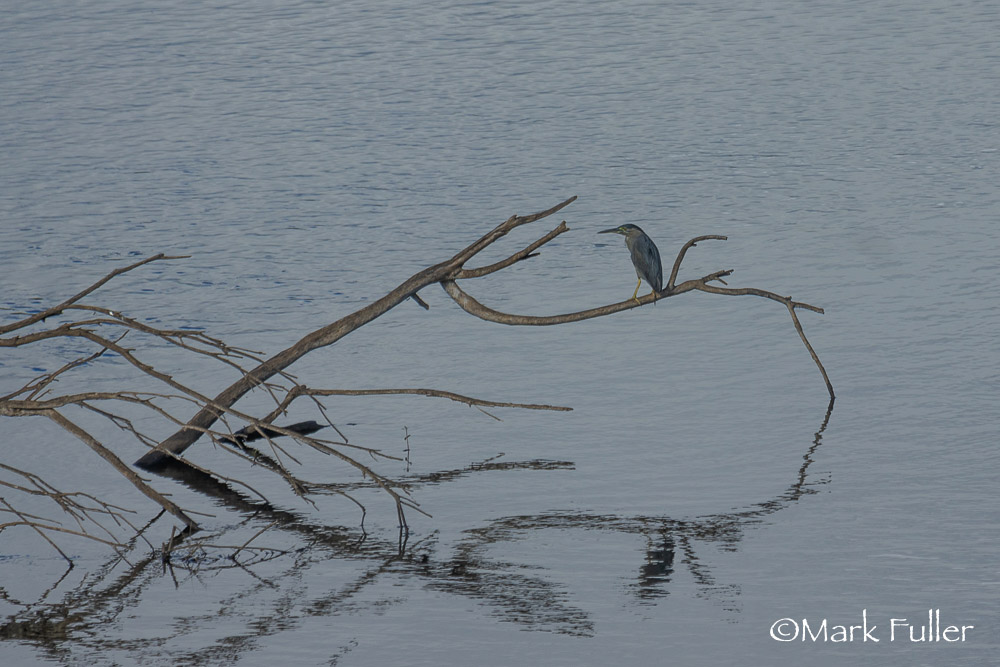
#113 Tawny Frogmouth – Penrith Weir
We managed to find three of these large owl-like nocturnal birds roosting in the morning sun.
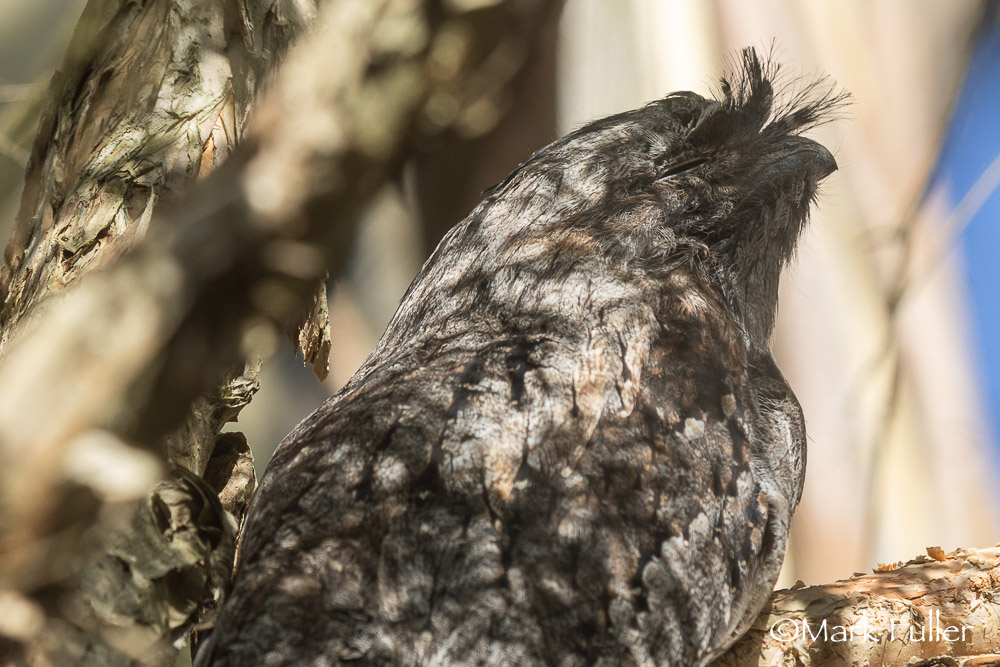
#111 Hooded Robin – Scheyville NP
A very special bird in a very special place – Hooded Robins have practically been extinct from the Cumberland Plain for the last 40 years so when this male turned up, the ‘twitchers’ soon followed.
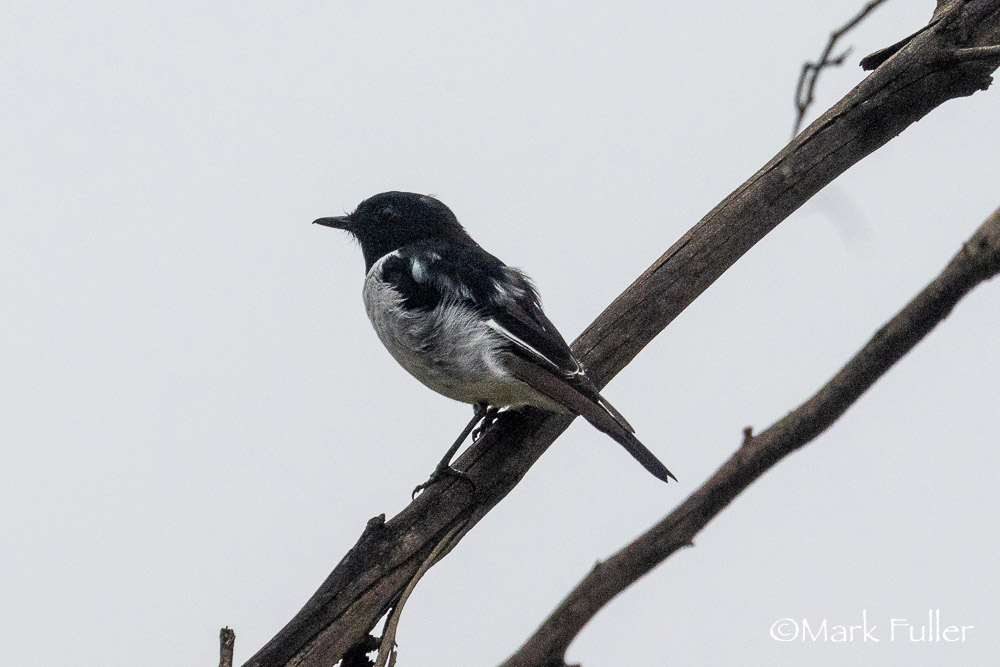
#110 Jacky Winter – Scheyville NP
A declining western Sydney species, always good to spot this bird on the Cumbarland Plain, sadly not such a common sight these days.

#105 Superb Lyrebird – Evans Lookout
It was very relaxing to watch this male Lyrebird on an early morning visit to Evans Lookout. I was actually hoping to see a Rockwarbler but who could be disappointed with such a special bird.
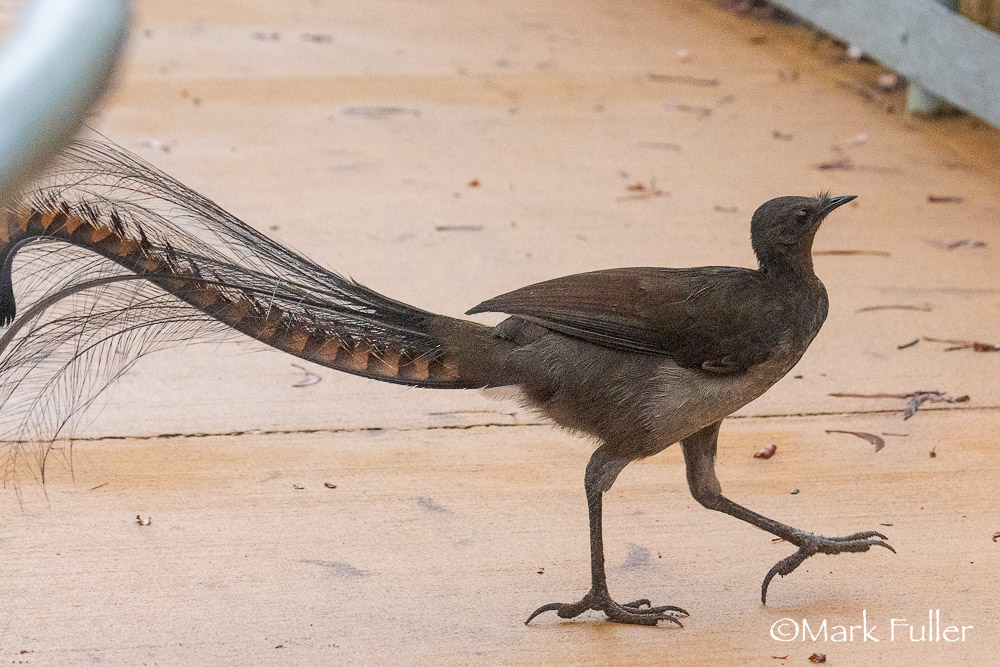
#104 Leaden Flycatcher – ‘Wallaroo’, Mulgoa
A regular breeding summer migrant to ‘Wallaroo’, a single pair usually arrive around September and immediately begin courtship.
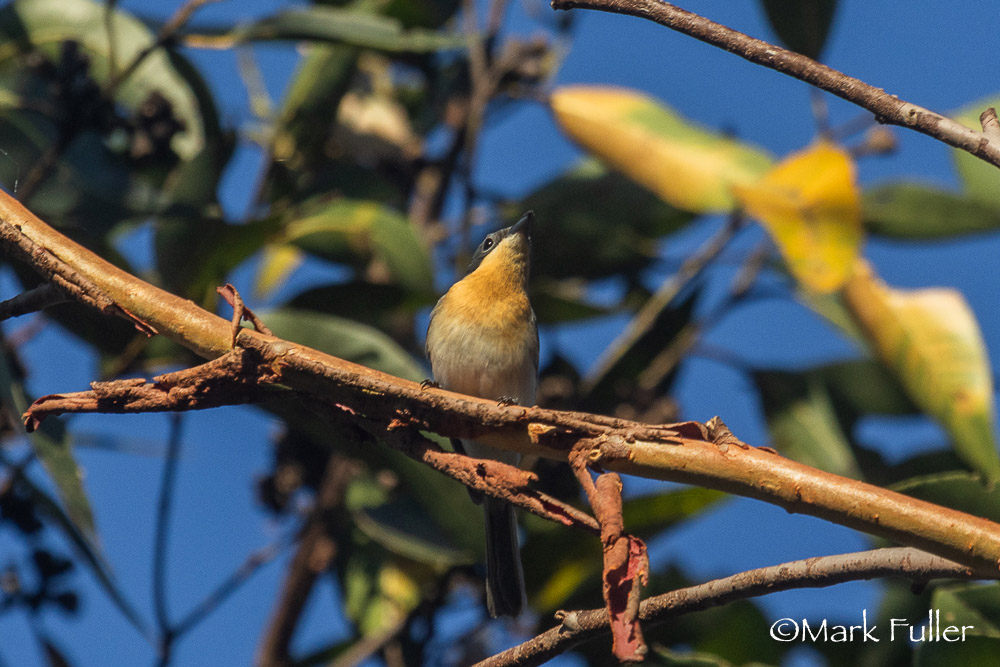
#97 Noisy Friarbird – ‘Wallaroo’, Mulgoa
Noisy Friarbirds are quite common at Wallaroo in the summer months, many breeding and raising young before heading north around April/May.

#91 Nankeen Night Heron – ‘Wallaroo’, Mulgoa
Our first survey of the Cumberland Land Conservancy property for 2024 was bound to add a few ‘firsts’ to the list, most suprising was the Nankeen Night Heron.

#87 Bassian Thrush – Hazelbrook
A walk on my local patch brought great rewards when I recorded my first Bassian Thrush record. Even better when it froze motionless allowing me to get a nice photo.

#84 Brown Thornbill
The best thing about starting a year list is picking up ‘new’ birds on your back doorstep. A walk in my local patch adding almost 20 species to my list.
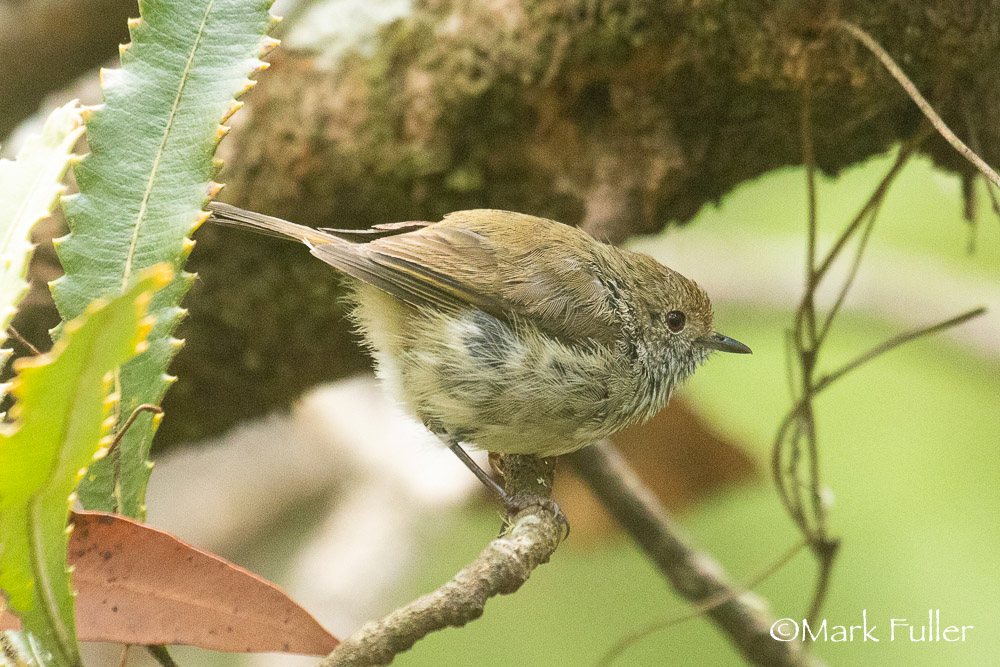
#67 Zebra Finch – Pitt Town Lagoon
Off to a flying start with over 70 species on my first birdwatch of 2025 at Pitt Town Lagoon, not only wetland species, but plenty of grassland birds as well.
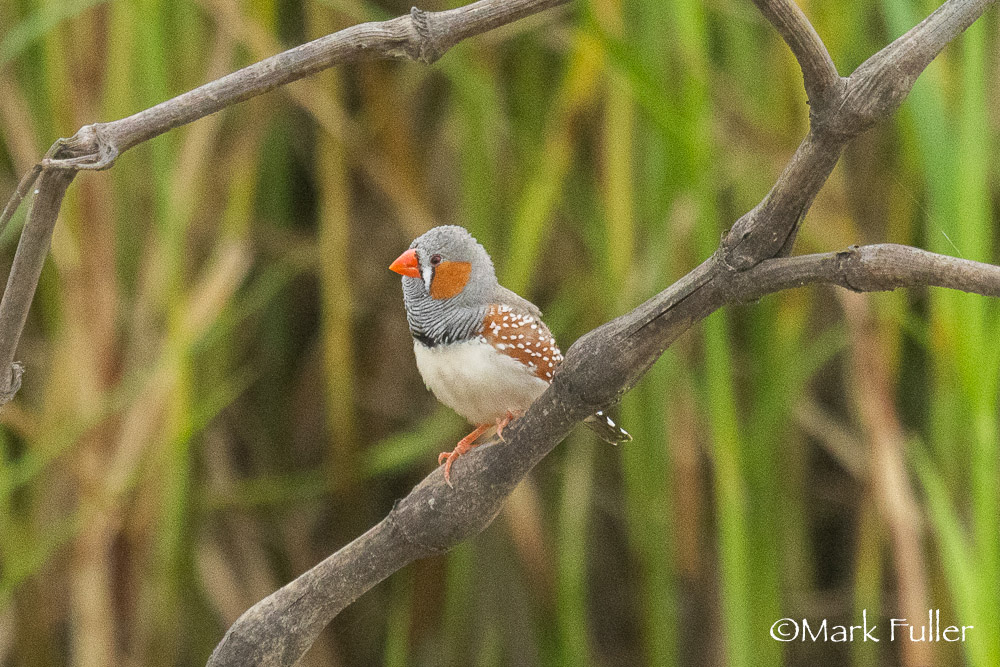
#60/61 Fairy/Tree Martin – Pitt Town Lagoon
Swallows and Martins are not always easy to tell, but much easier when you have large numbers both in flight and perched.

#39/43 Galah/Red-rumped Parrot – Pitt Town Lagoon
It felt like there was lots of everything at Pitt Town, Waterbirds, Bushbirds and not least Parrots, with these two species seen as we came back to the car.
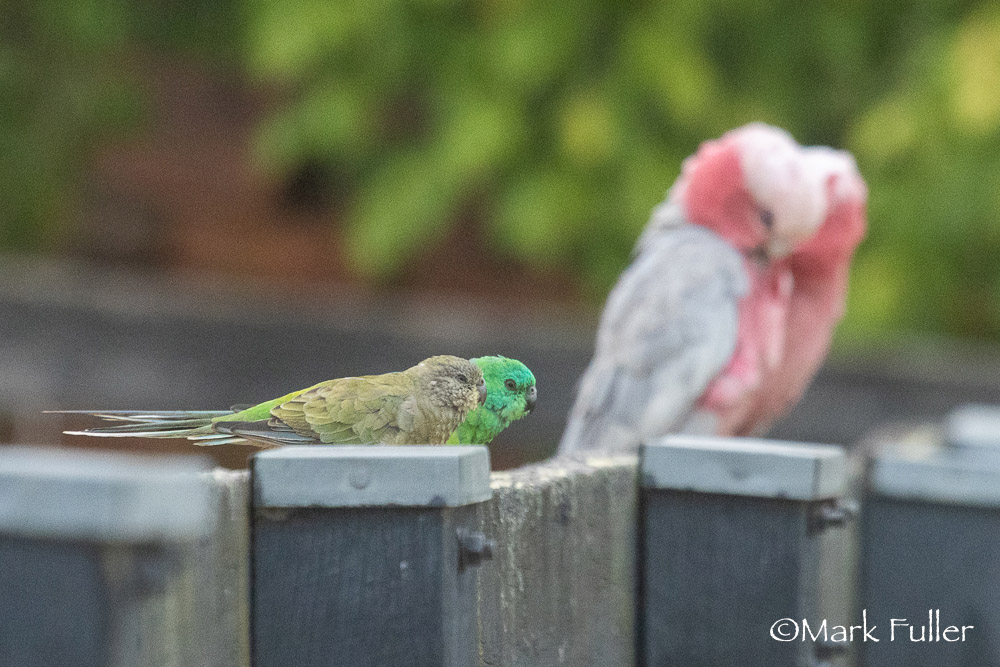
#34 Australian Pelican – Pitt Town Lagoon
There were plenty of Pelicans at Pitt Town, both out on the water or flying overhead like squadrons of aircraft.

#25 Caspian Tern – Pitt Town Lagoon
No mistaking this large tern with its bright red bill, it seemed happy to stand in the shallow edges of the lagoon.
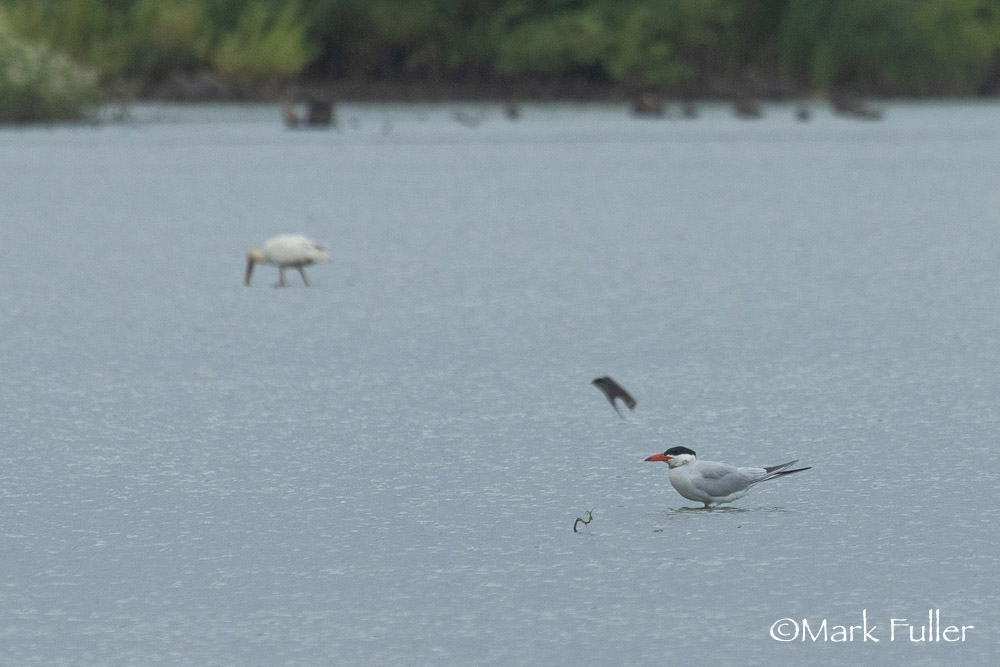
#19 Pacific Golden Plover – Pitt Town Lagoon
These 5 Pacific Golden Plovers were among several species of Migratory shorebirds seen using the wetlands.

#15/16 Baillon’s/Spotless Crake – Pitt Town Lagoon
Shy, secretive and small, crakes are always a good find when leaving the protection of a reed-bed to feed on exposed mud. No photo of the Australian Crake or the rare Black-tailed Nativehen, but to get all 9 members of the Raillidae family made for a perfect start.

#8 Lewin’s Rail – Pitt Town Lagoon
A fantastic sighting to see a Lewin’s Rail feeding out in the open. Rare, shy and secretive, this bird is often only heard calling from deep within thick reed-beds. We also saw a Buff-banded Rail.
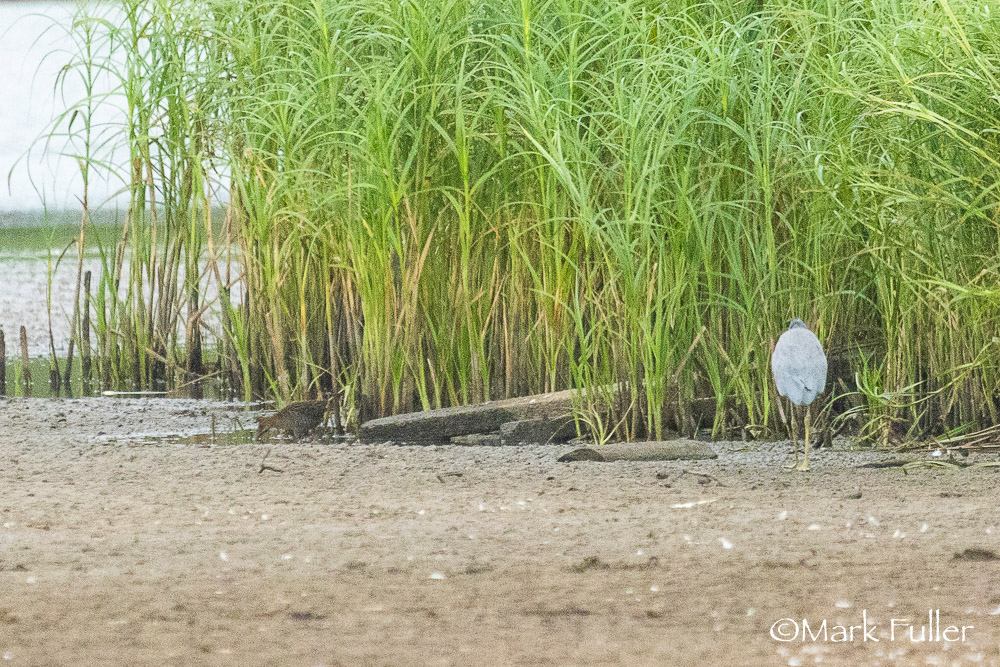
#1 Black Swan – Pitt Town Lagoon
My first bird was a very special one, Australia’s only native Swan and the only one in the world that is black. Although I didn’t get a photo on the day, I’ve decided to use one taken later in the year.
